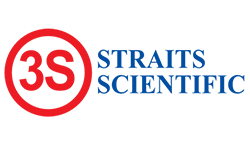AUSTRALIA

St Vincent’s Hospital, Sydney, Australia
Position
- A/Prof Hergen Buscher, FCICM, EDIC, DEAA
Senior Staff Specialist, Department of Intensive Care Medicine, St Vincent's Hospital, Sydney - Visiting Medical Officer, St Vincent's Private Hospital, Sydney
- Conjoint Associate Professor, School of Clinical Medicine, UNSW Medicine & Health, St Vincent's
- Clinical Campus, Discipline of Critical Care
- Honorary Professorial Fellow Critical Care Division, The George Institute
- Adjunct Associate Professor (Research) in Acute and Critical Care, School of Public Health and Preventive Medicine, Faculty of Medicine Nursing and Health Sciences, Monash University
Biodata
A/Prof Hergen Buscher started his medical career in Intensive Care and Anaesthesia in 1994 in Germany. He defended his thesis on ‘Work of Breathing and Pressure-Time-Product in ICU Patients’ and was awarded an academic Doctor Degree (University of Göttingen). While working as an ECMO Fellow in Leicester, UK at the time of the CESAR trial, Dr Buscher became interested in extracorporeal life support (ECLS).
Since 2014, he is leading the intensive care research at St Vincent’s Hospital, Sydney. One of the main focuses here is to further explore the critical care of patients with heart and lung transplantation, ventricular assist devices and ECLS. His main area of research interest centres around the blood management and anticoagulation during ECLS and the use of ECLS during cardiac arrest.
He became the principal investigator in 20 multi and single centre studies and represented Australia in the steering committee of the Extracorporeal Life Support Organisation (Asio-Pacific Chapter) from 2013-2017. In 2020 Hergen became the founding co-chair of the CICM special interest group on Extracorporeal Life Support.
As member of the Sydney ECLS research group, he participated in several multicentre studies on the use of ECLS during cardiac arrest. This included the prospective evaluation of its use and one of the first economic evaluations worldwide.
He participated successful in more than 15 grant applications (total value >2.5 million dollar), peer reviews for eight scientific journals, published more than 50 original papers and was cited about 1600 times. The current h-index is 19.
COMING SOON

St Vincent’s Hospital, Sydney, Australia
Position
- A/Prof Hergen Buscher, FCICM, EDIC, DEAA
Senior Staff Specialist, Department of Intensive Care Medicine, St Vincent's Hospital, Sydney - Visiting Medical Officer, St Vincent's Private Hospital, Sydney
- Conjoint Associate Professor, School of Clinical Medicine, UNSW Medicine & Health, St Vincent's
- Clinical Campus, Discipline of Critical Care
- Honorary Professorial Fellow Critical Care Division, The George Institute
- Adjunct Associate Professor (Research) in Acute and Critical Care, School of Public Health and Preventive Medicine, Faculty of Medicine Nursing and Health Sciences, Monash University
Biodata
A/Prof Hergen Buscher started his medical career in Intensive Care and Anaesthesia in 1994 in Germany. He defended his thesis on ‘Work of Breathing and Pressure-Time-Product in ICU Patients’ and was awarded an academic Doctor Degree (University of Göttingen). While working as an ECMO Fellow in Leicester, UK at the time of the CESAR trial, Dr Buscher became interested in extracorporeal life support (ECLS).
Since 2014, he is leading the intensive care research at St Vincent’s Hospital, Sydney. One of the main focuses here is to further explore the critical care of patients with heart and lung transplantation, ventricular assist devices and ECLS. His main area of research interest centres around the blood management and anticoagulation during ECLS and the use of ECLS during cardiac arrest.
He became the principal investigator in 20 multi and single centre studies and represented Australia in the steering committee of the Extracorporeal Life Support Organisation (Asio-Pacific Chapter) from 2013-2017. In 2020 Hergen became the founding co-chair of the CICM special interest group on Extracorporeal Life Support.
As member of the Sydney ECLS research group, he participated in several multicentre studies on the use of ECLS during cardiac arrest. This included the prospective evaluation of its use and one of the first economic evaluations worldwide.
He participated successful in more than 15 grant applications (total value >2.5 million dollar), peer reviews for eight scientific journals, published more than 50 original papers and was cited about 1600 times. The current h-index is 19.
COMING SOON
HONG KONG
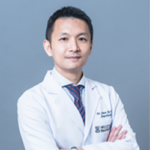
Gleneagles Hospital, Hong Kong
Current Position
Service Director of Critical Care Unit, Gleneagles Hospital
Director and Clinical Associate Professor, Critical Care Medicine Unit, School of Clinical Medicine, LKS Faculty of Medicine, The University of Hong Kong
Biosketch
Dr Sin Wai Ching, Simon, received his Bachelor of Medicine and Bachelor of Surgery MBBS from The University of Hong Kong in 2001, Membership of the Royal College of Physicians MRCP (UK) in 2004, Fellowship of the Hong Kong Academy of Medicine in 2008, Fellow of the Hong Kong College of Physicians in Critical Care Medicine (2008), Advances in Internal Medicine (2009) and Cardiology (2012), Fellow of the Royal College of Physicians of Edinburgh in 2017, and Programme in Perioperative Cardiothoracic Care at the National Heart Centre Singapore in 2015. He also attended the Institute for Medical Simulation: Instructor Course at Harvard Medical School in 2015 and iSIM Certification at the Peter M. Winter Institute for Simulation Education, and Research (WISER) at the University of Pittsburgh in 2016.
Dr Sin Wai Ching, Simon, was a course director for the APELSO Adult ECMO Training Course in Hong Kong. At present, he is the Extracorporeal Life Support Organisation (ELSO) Asia Pacific chapter steering committee and the ELSO Asia Pacific chapter Education Committee chairman.
ECMO Utilization in the Present & Future in Critical Care
Extracorporeal membrane oxygenation (ECMO) has become increasingly prevalent in critical care settings due to advancements in technology and expanding indications.
The presentation will explore the present and future utilization of ECMO. The current common applications of ECMO in acute respiratory distress syndrome (ARDS), cardiogenic shock, and E- CPR are discussed. Evidence supporting ECMO's efficacy in improving patient outcomes is highlighted. The prospects of ECMO in areas such as sepsis, trauma, and organ transplantation will also be explored.
Additionally, the integration of artificial intelligence in ECMO management holds promising potential for optimizing patient selection and enhancing clinical decision-making.
The importance of multidisciplinary collaboration in ECMO utilization will be addressed. ECMO education, protocol development and quality improvement are essential for achieving favorable outcomes and ensuring the sustainable implementation of ECMO in critical care units.
In conclusion, understanding the current applications, exploring new indications, and fostering multidisciplinary collaboration will further enhance the efficacy and accessibility of ECMO, ultimately improving patient care and outcomes in critical care settings.
Transport & Retrieval Of ECMO's patient
The transport and retrieval of patients on Extracorporeal membrane oxygenation (ECMO) support present unique challenges requiring specialized equipment and personnel. This abstract highlights the importance of pre-transfer assessment, appropriate transport mode selection, and effective communication among specialized transport teams. It also discusses the significance of post-transfer care and monitoring for achieving favorable outcomes. Additionally, the abstract touches upon the importance of ECMO networking, emphasizing the need for collaboration, shared expertise, and standardized protocols among ECMO centers. Successful transport and retrieval, along with a robust ECMO networking system, are crucial for optimizing patient care and outcomes in ECMO-supported patients.

Adult Intensive Care Unit, Queen Mary Hospital, Hong Kong
Current Position
Advanced Practice Nurse, ECMO Coordinator
Biosketch
Ricky Chan is the ECMO Coordinator and Advanced Practice Nurse of the Adult Intensive Care Unit of Hong Kong Queen Mary Hospital. He is also serving as the Education Committee Co-chair of APELSO.
Ricky has rich experiences in ECMO education and simulation and has helped set up education programs for various ECMO centers worldwide. His research interests include ECMO education, VA ECMO weaning, and ECPR.
Extracorporeal Membrane Oxygenation (ECMO) is a life-saving technology used in critical care settings for patients with severe cardiac and respiratory failure. The successful implementation and management of ECMO require a multidisciplinary team approach, with nursing playing a pivotal role in providing safe and effective care. A comprehensive training approach is aimed at enhancing nursing competence in ECMO.
The training program is designed to equip nurses with the knowledge, skills, and confidence necessary to deliver high-quality care to ECMO patients. It comprises a combination of didactic lectures, hands-on simulations, and clinical rotations. The didactic component covers the principles of ECMO, indications and contraindications, circuit management, troubleshooting common complications, and patient assessment. Simulations allow nurses to practice managing ECMO emergencies and refine their critical thinking and decision-making skills. Clinical rotations offer supervised exposure to real-life ECMO cases, allowing nurses to apply their knowledge in a controlled clinical setting.
A comprehensive training program has demonstrated positive outcomes regarding nursing competence and confidence in managing ECMO patients. Post-training assessments revealed significant improvements in knowledge retention, technical skills, and clinical judgment among participating nurses. Feedback from participants highlighted the value of hands-on simulations and clinical rotations in bridging the gap between theory and practice.
A comprehensive training approach focusing on didactic sessions, simulations, and clinical rotations is essential to enhance nursing competence in ECMO. Continuous professional development opportunities are crucial to ensure

Adult Intensive Care Unit, Queen Mary Hospital, Hong Kong
Current Position
Advanced Practice Nurse, ECMO Coordinator
Biosketch
Ricky Chan is the ECMO Coordinator and Advanced Practice Nurse of the Adult Intensive Care Unit of Hong Kong Queen Mary Hospital. He is also serving as the Education Committee Co-chair of APELSO.
Ricky has rich experiences in ECMO education and simulation and has helped set up education programs for various ECMO centers worldwide. His research interests include ECMO education, VA ECMO weaning, and ECPR.
Extracorporeal Membrane Oxygenation (ECMO) is a life-saving technology used in critical care settings for patients with severe cardiac and respiratory failure. The successful implementation and management of ECMO require a multidisciplinary team approach, with nursing playing a pivotal role in providing safe and effective care. A comprehensive training approach is aimed at enhancing nursing competence in ECMO.
The training program is designed to equip nurses with the knowledge, skills, and confidence necessary to deliver high-quality care to ECMO patients. It comprises a combination of didactic lectures, hands-on simulations, and clinical rotations. The didactic component covers the principles of ECMO, indications and contraindications, circuit management, troubleshooting common complications, and patient assessment. Simulations allow nurses to practice managing ECMO emergencies and refine their critical thinking and decision-making skills. Clinical rotations offer supervised exposure to real-life ECMO cases, allowing nurses to apply their knowledge in a controlled clinical setting.
A comprehensive training program has demonstrated positive outcomes regarding nursing competence and confidence in managing ECMO patients. Post-training assessments revealed significant improvements in knowledge retention, technical skills, and clinical judgment among participating nurses. Feedback from participants highlighted the value of hands-on simulations and clinical rotations in bridging the gap between theory and practice.
A comprehensive training approach focusing on didactic sessions, simulations, and clinical rotations is essential to enhance nursing competence in ECMO. Continuous professional development opportunities are crucial to ensure

Queen Mary Hospital, Hong Kong
Current Position
Advanced Practice Nurse
Biosketch
Mr SU is the Advanced Practice Nurse and Respiratory Workgroup Leader of the Adult Intensive Care Unit of Hong Kong Queen Mary Hospital. He graduated with a Master of Nursing (Critical Care Stream) from the University of Hong Kong in 2016. He was a Hong Kong Asia-Pacific ESLO Adult ECMO Training Course facilitator in 2022 and 2023.
Extracorporeal Membrane Oxygenation (ECMO) is an advanced life support therapy for patients with severe respiratory or cardiac failure. Different bores and types of cannulas are utilised for ECMO circuit access. Proper cannula selection and management are essential for patient safety and clinical outcomes. Cannula sites are vulnerable to complications due to repeated manipulation, pressure wounds, and risk of infection. Moreover, patients with ECMO support are at high risk of skin breakdown due to comorbidities and impaired perfusion. Effective skin care and wound management are crucial for circuit longevity and patient outcomes.
Patient factors determine cannula site, size, and access method. For venovenous (VV) ECMO, bicaval dual lumen cannulas ranging from 21-29Fr are most commonly used. Venoarterial (VA) ECMO typically employs an arterial cannula 15-21Fr and a separate venous cannula 15- 25Fr.
Prolonged canulation stresses the skin the increases vulnerability to trauma and nosocomial pathogens. Standardising evidence-based cannula site care can prevent complications. Early identification of issues through close monitoring allows timely intervention.
Moreover, baseline and daily full-body skin assessments are recommended to evaluate perfusion,
moisture, risk areas and early signs of damage. Pressure areas are relieved every 2 to 4 hours, and meticulous peri-cannular or peri-wound skin care is performed.
Appropriate cannula selection and vigilant post-insertion monitoring and care are integral to ECMO patient safety. Systematic skin assessments and targeted prevention are vital in these critically ill patients. Standardised guidelines optimise cannula and skin management and early detection of complications.

Queen Mary Hospital, Hong Kong
Current Position
Advanced Practice Nurse
Biosketch
Mr SU is the Advanced Practice Nurse and Respiratory Workgroup Leader of the Adult Intensive Care Unit of Hong Kong Queen Mary Hospital. He graduated with a Master of Nursing (Critical Care Stream) from the University of Hong Kong in 2016. He was a Hong Kong Asia-Pacific ESLO Adult ECMO Training Course facilitator in 2022 and 2023.
Extracorporeal Membrane Oxygenation (ECMO) is an advanced life support therapy for patients with severe respiratory or cardiac failure. Different bores and types of cannulas are utilised for ECMO circuit access. Proper cannula selection and management are essential for patient safety and clinical outcomes. Cannula sites are vulnerable to complications due to repeated manipulation, pressure wounds, and risk of infection. Moreover, patients with ECMO support are at high risk of skin breakdown due to comorbidities and impaired perfusion. Effective skin care and wound management are crucial for circuit longevity and patient outcomes.
Patient factors determine cannula site, size, and access method. For venovenous (VV) ECMO, bicaval dual lumen cannulas ranging from 21-29Fr are most commonly used. Venoarterial (VA) ECMO typically employs an arterial cannula 15-21Fr and a separate venous cannula 15- 25Fr.
Prolonged canulation stresses the skin the increases vulnerability to trauma and nosocomial pathogens. Standardising evidence-based cannula site care can prevent complications. Early identification of issues through close monitoring allows timely intervention.
Moreover, baseline and daily full-body skin assessments are recommended to evaluate perfusion,
moisture, risk areas and early signs of damage. Pressure areas are relieved every 2 to 4 hours, and meticulous peri-cannular or peri-wound skin care is performed.
Appropriate cannula selection and vigilant post-insertion monitoring and care are integral to ECMO patient safety. Systematic skin assessments and targeted prevention are vital in these critically ill patients. Standardised guidelines optimise cannula and skin management and early detection of complications.

Queen Mary Hospital, Hong Kong
Current Position
Advanced Practice Nurse
Education
- ECLS Trainer, Nemours Alfred I, DuPont Hospital for Children 2014
- Master of Science in Cardiology, The Chinese University of Hong Kong 2013
- Pgd in Advanced Nursing Practice (ICU), The University of Hong Kong 2006
Work Experience
- As Advance Practice Nurse in Queen Mary Hospital since 2011 till present
- As one of the core members in EMCO service team in ICU
- Responsible to develop and revise of nursing policies and procedure in ECMO
- Provide training and monitor quality and safety related ECMO service
For the last decade, there has been a significant increase in the use of ECMO within intensive care units (ICU). Most of these patients suffer from severe physiological changes and often experience hemodynamic instability. The use of vasoactive agents, sedation, and steroids leads to impaired splanchnic circulation and delays gastric emptying as a result creating difficulties in enteral nutrition support. Moreover, ECMO patients are prompt to increase protein catabolism and develop insulin resistant which can increase the protein lost for the patient. Unfortunately, most of the time, the priority of patient management usually goes to treating the underlying organ dysfunction therefore the implication of providing sufficient nutritional therapy is not often being fully acknowledged.
Although data shows the importance of providing adequate nutritional support for critically ill patients can improve outcomes, accurate measurement of patients’ calories demand and formulating a comprehensive nutritional therapy is always a challenge in the ECMO population.
Let’s take this opportunities to share some of the evidence based guidance practice in this topic

Queen Mary Hospital, Hong Kong
Current Position
Advanced Practice Nurse
Education
- ECLS Trainer, Nemours Alfred I, DuPont Hospital for Children 2014
- Master of Science in Cardiology, The Chinese University of Hong Kong 2013
- Pgd in Advanced Nursing Practice (ICU), The University of Hong Kong 2006
Work Experience
- As Advance Practice Nurse in Queen Mary Hospital since 2011 till present
- As one of the core members in EMCO service team in ICU
- Responsible to develop and revise of nursing policies and procedure in ECMO
- Provide training and monitor quality and safety related ECMO service
For the last decade, there has been a significant increase in the use of ECMO within intensive care units (ICU). Most of these patients suffer from severe physiological changes and often experience hemodynamic instability. The use of vasoactive agents, sedation, and steroids leads to impaired splanchnic circulation and delays gastric emptying as a result creating difficulties in enteral nutrition support. Moreover, ECMO patients are prompt to increase protein catabolism and develop insulin resistant which can increase the protein lost for the patient. Unfortunately, most of the time, the priority of patient management usually goes to treating the underlying organ dysfunction therefore the implication of providing sufficient nutritional therapy is not often being fully acknowledged.
Although data shows the importance of providing adequate nutritional support for critically ill patients can improve outcomes, accurate measurement of patients’ calories demand and formulating a comprehensive nutritional therapy is always a challenge in the ECMO population.
Let’s take this opportunities to share some of the evidence based guidance practice in this topic
INDONESIA
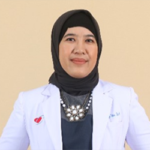
National Cardiovascular Center Harapan Kita, Jakarta, Indonesia
Current Position
Pediatric Cardiac Intensivist
Biosketch
Dr Liza Fitria is a staff physician at Pediatric Cardiac Intensive Care Unit, National Cardiovascular Center Harapan Kita since 2011. She received her basic medical degree from the Faculty of Medicine, University of Indonesia in 1999 and she did her pediatric residency at the Department of Child Health Cipto Mangunkusumo Hospital, Faculty of Medicine, University Of Indonesia from 2005 until 2010. She was an Honorary Fellow of Pediatric Intensive Care Training at Royal Children’s Hospital, Melbourne from 2017 until 2018.
Dr Liza Fitria is a member of the ECMO team at National Cardiovascular Center Harapan Kita , Jakarta, Indonesia.
Ethical And Social Issues
Along with the clinical and technical aspects of ECMO administration, the use of ECMO raises complicated ethical and social issues that require thoughtful consideration. Issues that may be faced includes the patient selection, indications for ECLS in individual patients, access to ECMO centers and patient logistics. There are also challenges specific to patient undergoing ECPR (Extracorporeal Cardiopulmonary Resuscitation), such as the decision making (for or against ECPR), performing ECLS in a crisis, and when to withdraw ECLS support.
Ethical consideration in ECMO program encompasses issues such as patient autonomy, beneficence, and resource allocation. Balancing patient autonomy, including the right to refuse or withdraw ECMO, with the duty of healthcare providers to act in the patient's best interest poses significant challenges. Ethical guidelines, clinical ethics consultations and palliative care teams are essential components in navigating these dilemmas. When ECMO resources are limited, resource distribution becomes crucial, necessitating clear and equitable allocation mechanisms. ECMO's life-saving potential can lead to profound changes in patients' lives, including long-term disability and a need for ongoing support. Ethical care extends beyond medical intervention to include psychosocial and palliative aspects, with a focus on patient-centered decision-making and shared decision-making with families, particularly in pediatric patients receiving ECMO assistance.
In conclusion, ECMO practice entails complex decision making, in which ethical and social issues may occur. By implementing open discussion with all significant parties and adherence to guidelines, healthcare providers can navigate these complex issues and provide medically effective and ethically sound ECMO therapy.
Quality And Safety Within ECMO Programs
Extracorporeal Membrane Oxygenation (ECMO) is an invasive, high-risk, low-volume, life-saving intervention which is essential to achieve excellent outcomes in critical care units. As the utilization of ECMO continues to expand, commitment to both quality and safety remains crucial, along with continuous improvement supported by innovation and new technologies.
Quality within ECMO programs encompasses various aspects, including data collection and performance measurement in various domains. It is also supported by ongoing training and simulation exercises for ECMO team members to enhance their skills and response in high-stress situations. Establishing quality improvement program enables the multidisciplinary team to identify barriers and improve the overall process. Safety is equally vital, given the potential for complications associated with ECMO. Standardized protocols and checklists can mitigate these risks, while a culture of open communication and error reporting fosters a safer environment. Thoughtful planning, long-term commitment and adequate resources are essential in every ECMO program.
In conclusion, maintaining quality and safety within ECMO programs is essential to maximize patient outcomes and minimize adverse events. By integrating evidence-based practices, ongoing training, and robust quality assurance initiatives, healthcare institutions can ensure that ECMO remains a reliable and safe therapeutic option for critically ill patients. Achieving this combination of quality and safety requires a consistent and ongoing commitment to excellence in the field of ECMO therapy.

National Cardiovascular Center Harapan Kita, Jakarta, Indonesia
Current Position
Pediatric Cardiac Intensivist
Biosketch
Dr Liza Fitria is a staff physician at Pediatric Cardiac Intensive Care Unit, National Cardiovascular Center Harapan Kita since 2011. She received her basic medical degree from the Faculty of Medicine, University of Indonesia in 1999 and she did her pediatric residency at the Department of Child Health Cipto Mangunkusumo Hospital, Faculty of Medicine, University Of Indonesia from 2005 until 2010. She was an Honorary Fellow of Pediatric Intensive Care Training at Royal Children’s Hospital, Melbourne from 2017 until 2018.
Dr Liza Fitria is a member of the ECMO team at National Cardiovascular Center Harapan Kita , Jakarta, Indonesia.
Ethical And Social Issues
Along with the clinical and technical aspects of ECMO administration, the use of ECMO raises complicated ethical and social issues that require thoughtful consideration. Issues that may be faced includes the patient selection, indications for ECLS in individual patients, access to ECMO centers and patient logistics. There are also challenges specific to patient undergoing ECPR (Extracorporeal Cardiopulmonary Resuscitation), such as the decision making (for or against ECPR), performing ECLS in a crisis, and when to withdraw ECLS support.
Ethical consideration in ECMO program encompasses issues such as patient autonomy, beneficence, and resource allocation. Balancing patient autonomy, including the right to refuse or withdraw ECMO, with the duty of healthcare providers to act in the patient's best interest poses significant challenges. Ethical guidelines, clinical ethics consultations and palliative care teams are essential components in navigating these dilemmas. When ECMO resources are limited, resource distribution becomes crucial, necessitating clear and equitable allocation mechanisms. ECMO's life-saving potential can lead to profound changes in patients' lives, including long-term disability and a need for ongoing support. Ethical care extends beyond medical intervention to include psychosocial and palliative aspects, with a focus on patient-centered decision-making and shared decision-making with families, particularly in pediatric patients receiving ECMO assistance.
In conclusion, ECMO practice entails complex decision making, in which ethical and social issues may occur. By implementing open discussion with all significant parties and adherence to guidelines, healthcare providers can navigate these complex issues and provide medically effective and ethically sound ECMO therapy.
Quality And Safety Within ECMO Programs
Extracorporeal Membrane Oxygenation (ECMO) is an invasive, high-risk, low-volume, life-saving intervention which is essential to achieve excellent outcomes in critical care units. As the utilization of ECMO continues to expand, commitment to both quality and safety remains crucial, along with continuous improvement supported by innovation and new technologies.
Quality within ECMO programs encompasses various aspects, including data collection and performance measurement in various domains. It is also supported by ongoing training and simulation exercises for ECMO team members to enhance their skills and response in high-stress situations. Establishing quality improvement program enables the multidisciplinary team to identify barriers and improve the overall process. Safety is equally vital, given the potential for complications associated with ECMO. Standardized protocols and checklists can mitigate these risks, while a culture of open communication and error reporting fosters a safer environment. Thoughtful planning, long-term commitment and adequate resources are essential in every ECMO program.
In conclusion, maintaining quality and safety within ECMO programs is essential to maximize patient outcomes and minimize adverse events. By integrating evidence-based practices, ongoing training, and robust quality assurance initiatives, healthcare institutions can ensure that ECMO remains a reliable and safe therapeutic option for critically ill patients. Achieving this combination of quality and safety requires a consistent and ongoing commitment to excellence in the field of ECMO therapy.
INDIA

Getinge Medical India
Position
Manager – Commercial Operations & Clinical Marketing APAC
Biodata
About 20 years of total experience, specialised Perfusionist with exceptional knowledge and hands-on experience in Assist Devices – Especially ECMO and IABP therapy; Currently working as a Subject Matter Expert for Cardiac assist and Cardiopulmonary products in Getinge
Clinical Perfusionist, with an impeccable track record of perfusing more than 2150 cases in a tenure spanning nine years
Work Experience
Getinge India Private Limited, Chennai, May 2014 - Till Date as Manager Commercial Operations & Clinical Marketing - APAC
International Diploma in ECMO - Pitie - Salpetriere, Paris
- Subject matter expert in ECMO and IABP therapy products; point person in conducting root-cause analysis and resolving technical complaints
- Certified Train the Trainer, conducting Product Application sessions, imparting product knowledge to Product Trainers, Technicians, Sales colleagues and Channel Partners
COMING SOON

Getinge Medical India
Position
Manager – Commercial Operations & Clinical Marketing APAC
Biodata
About 20 years of total experience, specialised Perfusionist with exceptional knowledge and hands-on experience in Assist Devices – Especially ECMO and IABP therapy; Currently working as a Subject Matter Expert for Cardiac assist and Cardiopulmonary products in Getinge
Clinical Perfusionist, with an impeccable track record of perfusing more than 2150 cases in a tenure spanning nine years
Work Experience
Getinge India Private Limited, Chennai, May 2014 - Till Date as Manager Commercial Operations & Clinical Marketing - APAC
International Diploma in ECMO - Pitie - Salpetriere, Paris
- Subject matter expert in ECMO and IABP therapy products; point person in conducting root-cause analysis and resolving technical complaints
- Certified Train the Trainer, conducting Product Application sessions, imparting product knowledge to Product Trainers, Technicians, Sales colleagues and Channel Partners
COMING SOON
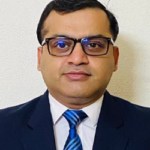
Werfen for India and South Asia
Current Position
Associate Clinical Director
Education and Awards
- University MBBS Gold Medalist (2002)
- Bhamashah Award for Excelling in the field of Medicine in Rajasthan state of India (2003)
- Honors in MD Pathology (2007)
- Gold Medal, Ministry of Health and Family Welfare, for original research on PBM (2008)
- Hematopathology (Coagulation) training at CMC, Vellore, India (2011, 2014, 2019)
- Clinical Hemostasiology training at University Essen Hospital, Essen, Germany (2022)
- Reviewer: Pan American Journal of Trauma, Critical care & Emergency Surgery (2022 onwards)
- Promoter and key-coordinator PBM Task force –India (2018), Nepal (2021), Sri Lanka (2022)
- Founder –Certificate course in Patient Blood Management (Since 2020, Accredited, Global, 500+ participants, 70+ faculty)
Key Research work in relevant field
- Primary author for the first publication on PBM Recommendations from India; JOACP (2020)
- COVID-19–Associated Coagulopathy: Current status and Knowledge Gaps ; A&A (2020)
- Utility of Platelet Function Tests: A Recent Review Round Up; JCCC (2020)
- Primary author for publication on D-dimer best practice recommendations from India; JIMA (2021)
- Utility of Platelet Function Testing in Cardiac Surgery; JCCC (2021)
- Impact of ROTEM on cost savings and reducing potential preventable complications; NATA (2023)
- D-dimer: Advantage lost in post-COVID era?; ISTH (20023)
Expertise & Interests:
- Patient Blood Management, Goal-directed bleeding Management, POC Viscoelastic testing, D-dimer, Hemostasis and Diagnostic Hemostasiology Anti-platelet drug monitoring, Thrombophilia, Pre-analytical quality assurance in hematology and coagulation.
COMING SOON

Werfen for India and South Asia
Current Position
Associate Clinical Director
Education and Awards
- University MBBS Gold Medalist (2002)
- Bhamashah Award for Excelling in the field of Medicine in Rajasthan state of India (2003)
- Honors in MD Pathology (2007)
- Gold Medal, Ministry of Health and Family Welfare, for original research on PBM (2008)
- Hematopathology (Coagulation) training at CMC, Vellore, India (2011, 2014, 2019)
- Clinical Hemostasiology training at University Essen Hospital, Essen, Germany (2022)
- Reviewer: Pan American Journal of Trauma, Critical care & Emergency Surgery (2022 onwards)
- Promoter and key-coordinator PBM Task force –India (2018), Nepal (2021), Sri Lanka (2022)
- Founder –Certificate course in Patient Blood Management (Since 2020, Accredited, Global, 500+ participants, 70+ faculty)
Key Research work in relevant field
- Primary author for the first publication on PBM Recommendations from India; JOACP (2020)
- COVID-19–Associated Coagulopathy: Current status and Knowledge Gaps ; A&A (2020)
- Utility of Platelet Function Tests: A Recent Review Round Up; JCCC (2020)
- Primary author for publication on D-dimer best practice recommendations from India; JIMA (2021)
- Utility of Platelet Function Testing in Cardiac Surgery; JCCC (2021)
- Impact of ROTEM on cost savings and reducing potential preventable complications; NATA (2023)
- D-dimer: Advantage lost in post-COVID era?; ISTH (20023)
Expertise & Interests:
- Patient Blood Management, Goal-directed bleeding Management, POC Viscoelastic testing, D-dimer, Hemostasis and Diagnostic Hemostasiology Anti-platelet drug monitoring, Thrombophilia, Pre-analytical quality assurance in hematology and coagulation.
COMING SOON
SAUDI ARABIA
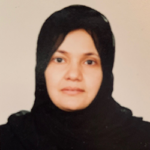
Heart Centre, King Faisal Specialist Hospital And Research Centre Riyadh, KSA
Position
Consultant pediatric intensivist
Medical education
- Medical school: King Saud University, Riyadh Saudi Arabia 1987-1994
- Degree: M.B.B.S
- Rotating internship: King Khalid University Hospital 1993-1994
Qualification
- American Board Of General Pediatric
- Arab Board Of General Pediatric
- Pediatric Intensive Care Training At Fellowship Training Program Boston Children Hospital
- Pediatric Intensive Care Training In The Fellowship-Training Program, KFSH&RC .Riyadh, Saudi Arabia.
Academic appointments
- Sept 1994-Aug 1997: Pediatric Resident –Arab Board Training Program-KFSH&RC , Riyadh Saudi Arabia.
- Sept 1997-Aug 1998: Senior Resident-American Board Training Program-University Of Virginia Children Medical Center. Charlottesville, Virginia, USA.
- Jan 1999-July 1999: Clinical Fellow In Pediatric Intensive Care, Children Hospital, Harvard Medical School. Boston, USA.
- Jun 2000 – December 2001: Pediatric Intensive Care Training Fellowship Program At KFSH&RC.
- Jan 2002 – Oct 2002: Senior Registrar, Pediatric Medical Cardiac Intensive Care Unit, Prince Sultan Cardiac Center (PSCC)
- October 2002 – June 2019: Consultant Pediatric Intensive Care, Department Of Cardiac Critical Care PSCC.
- June 2019 To Date: Consultant Pediatric Cardiac Intensive Care King Faisal Specialist Hospital And Research Centre.
- January 2015 –June 2019 Supervisor Of The PSCC Pediatric Cardiac Critical Care Training Program
COMING SOON

Heart Centre, King Faisal Specialist Hospital And Research Centre Riyadh, KSA
Position
Consultant pediatric intensivist
Medical education
- Medical school: King Saud University, Riyadh Saudi Arabia 1987-1994
- Degree: M.B.B.S
- Rotating internship: King Khalid University Hospital 1993-1994
Qualification
- American Board Of General Pediatric
- Arab Board Of General Pediatric
- Pediatric Intensive Care Training At Fellowship Training Program Boston Children Hospital
- Pediatric Intensive Care Training In The Fellowship-Training Program, KFSH&RC .Riyadh, Saudi Arabia.
Academic appointments
- Sept 1994-Aug 1997: Pediatric Resident –Arab Board Training Program-KFSH&RC , Riyadh Saudi Arabia.
- Sept 1997-Aug 1998: Senior Resident-American Board Training Program-University Of Virginia Children Medical Center. Charlottesville, Virginia, USA.
- Jan 1999-July 1999: Clinical Fellow In Pediatric Intensive Care, Children Hospital, Harvard Medical School. Boston, USA.
- Jun 2000 – December 2001: Pediatric Intensive Care Training Fellowship Program At KFSH&RC.
- Jan 2002 – Oct 2002: Senior Registrar, Pediatric Medical Cardiac Intensive Care Unit, Prince Sultan Cardiac Center (PSCC)
- October 2002 – June 2019: Consultant Pediatric Intensive Care, Department Of Cardiac Critical Care PSCC.
- June 2019 To Date: Consultant Pediatric Cardiac Intensive Care King Faisal Specialist Hospital And Research Centre.
- January 2015 –June 2019 Supervisor Of The PSCC Pediatric Cardiac Critical Care Training Program
COMING SOON
SINGAPORE
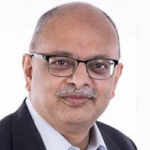
Gleneagles Hospital, Singapore
Current Position
Cardiothoracic surgeon
Biosketch
Dr. Sriram Shankar is a cardiothoracic surgeon practising at Gleneagles Hospital, Singapore.
Dr Shankar was the recipient of Dr Rama Rao Gold Medal Anatomy in 1978, First Prize of Honor in Microbiology in 1980 and Service Quality Bronze in 2001.
Dr Shankar has had extensive experience with Adult Cardiac Surgery, having performed over 1000 off-pump procedures for patients with Coronary Artery Disease. He is trained to undertake Valve restorative operations for both Children & Adults, with vast experience in both. He has had excellent results with patients with aortic disease, especially aneurysm surgery and surgery for acute type 1 aortic dissection.
Dr. Shankar has also written and published several articles.
COMING SOON

Gleneagles Hospital, Singapore
Current Position
Cardiothoracic surgeon
Biosketch
Dr. Sriram Shankar is a cardiothoracic surgeon practising at Gleneagles Hospital, Singapore.
Dr Shankar was the recipient of Dr Rama Rao Gold Medal Anatomy in 1978, First Prize of Honor in Microbiology in 1980 and Service Quality Bronze in 2001.
Dr Shankar has had extensive experience with Adult Cardiac Surgery, having performed over 1000 off-pump procedures for patients with Coronary Artery Disease. He is trained to undertake Valve restorative operations for both Children & Adults, with vast experience in both. He has had excellent results with patients with aortic disease, especially aneurysm surgery and surgery for acute type 1 aortic dissection.
Dr. Shankar has also written and published several articles.
COMING SOON
MALAYSIA
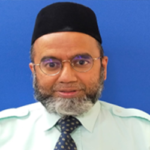
Hospital Pulau Pinang, Malaysia
Current Position
Senior Perfusionist
Chief Supervisor for Assistant Medical Officer in the Penang State Health Department
Biosketch
Abdul Halim Abdul Hamid received his Health Science Diploma in 1994 from the Institute for Health Management (Seremban), Malaysia. He did his perfusionist attachment at the National Heart Institute (IJN) in 1995 and at Royal Prince Alfred, Sydney in 1997. He also did some short attachments at Birmingham (UK 1995), Zwolle Netherland (2000), Narayana Hyurdayala Banglore and KM Cherian Madras (2010). He gained further exposure and experience in ECMO when he was in the UK in 2008. With more than 28 years of experience as a perfusionist, he is one of the key members in the Cardiothoracic Anaesthesia and Perfusion Unit, Department of Anaesthesiology and Intensive Care, Hospital Pulau Pinang. He is currently serving as the Chief Supervisor for Assistant Medical Officer in the Penang State Health Department.
Abdul Halim Abdul Hamid is a member of the Malaysian Perfusionist Society, Secretary of Penang Perfusion Society, honorary member of Malaysian Society of Cardiothoracic Anaesthesiology & Perfusion (MASCAP), and Chairman for Malaysian Association of Assistant Medical Officer (Penang Branch). He is also the Chairman for Technical Committee in Cardiothoracic services for the Assistant Medical Officer under the Division of Assistant Medical Officer Ministry of Health Malaysia .
Abdul Halim Abdul Hamid also involved in NGO and served as the treasurer for Masjid Benggali, and as a committee member in the MadrasahTahfiz Miftahul Ulum and United Muslim Association. He is also known for his passion for cooking and has participated in cooking for the community and department functions.

Hospital Pulau Pinang, Malaysia
Current Position
Senior Perfusionist
Chief Supervisor for Assistant Medical Officer in the Penang State Health Department
Biosketch
Abdul Halim Abdul Hamid received his Health Science Diploma in 1994 from the Institute for Health Management (Seremban), Malaysia. He did his perfusionist attachment at the National Heart Institute (IJN) in 1995 and at Royal Prince Alfred, Sydney in 1997. He also did some short attachments at Birmingham (UK 1995), Zwolle Netherland (2000), Narayana Hyurdayala Banglore and KM Cherian Madras (2010). He gained further exposure and experience in ECMO when he was in the UK in 2008. With more than 28 years of experience as a perfusionist, he is one of the key members in the Cardiothoracic Anaesthesia and Perfusion Unit, Department of Anaesthesiology and Intensive Care, Hospital Pulau Pinang. He is currently serving as the Chief Supervisor for Assistant Medical Officer in the Penang State Health Department.
Abdul Halim Abdul Hamid is a member of the Malaysian Perfusionist Society, Secretary of Penang Perfusion Society, honorary member of Malaysian Society of Cardiothoracic Anaesthesiology & Perfusion (MASCAP), and Chairman for Malaysian Association of Assistant Medical Officer (Penang Branch). He is also the Chairman for Technical Committee in Cardiothoracic services for the Assistant Medical Officer under the Division of Assistant Medical Officer Ministry of Health Malaysia .
Abdul Halim Abdul Hamid also involved in NGO and served as the treasurer for Masjid Benggali, and as a committee member in the MadrasahTahfiz Miftahul Ulum and United Muslim Association. He is also known for his passion for cooking and has participated in cooking for the community and department functions.
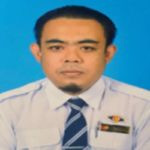
Hospital Pulau Pinang, Malaysia
Current Position
Perfusionist
Biosketch
Ahmad Fais Abu Seman is an assistant medical officer working in the Cardiothoracic Anesthesiology and Perfusion unit of Hospital Pulau Pinang as a clinical perfusionist with an experience of 11 years in the field. He had a Diploma in Mechanical Engineering (Power Plant) from Polytechnic Sultan Abdul Halim Muadzam Shah in 2003, Diploma In Medical Assistant from Ulu Kinta Medical Assistant College in 2007) and Advanced Diploma In Cardiovascular Perfusion in 2016. He is credentialed as an Assistant Medical Officer in Cardiovascular Perfusion. Ahmad Fais Abu Seman is actively involved in teaching and training in the fields of perfusion in the Ministry of Health.
Use of extracorporeal membrane oxygenation (ECMO) has been exponentially increasing over the last decade and is now considered a mainstream lifesaving treatment modality in critical care medicine. The following presentation will discuss the role of perfusionist in ECLS/ECMO program in Malaysia (MOH).

Hospital Pulau Pinang, Malaysia
Current Position
Perfusionist
Biosketch
Ahmad Fais Abu Seman is an assistant medical officer working in the Cardiothoracic Anesthesiology and Perfusion unit of Hospital Pulau Pinang as a clinical perfusionist with an experience of 11 years in the field. He had a Diploma in Mechanical Engineering (Power Plant) from Polytechnic Sultan Abdul Halim Muadzam Shah in 2003, Diploma In Medical Assistant from Ulu Kinta Medical Assistant College in 2007) and Advanced Diploma In Cardiovascular Perfusion in 2016. He is credentialed as an Assistant Medical Officer in Cardiovascular Perfusion. Ahmad Fais Abu Seman is actively involved in teaching and training in the fields of perfusion in the Ministry of Health.
Use of extracorporeal membrane oxygenation (ECMO) has been exponentially increasing over the last decade and is now considered a mainstream lifesaving treatment modality in critical care medicine. The following presentation will discuss the role of perfusionist in ECLS/ECMO program in Malaysia (MOH).
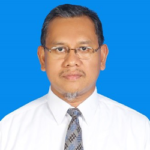
Hospital Sultan Idris Shah, Serdang, Malaysia
Current Position
Senior Consultant Cardiothoracic Surgeon
Biosketch
Dr. Ahmadi Salleh received his medical degree from Flinders University, Adelaide, Australia, in December 1996 and his Master of Surgery (General Surgery) from Universiti Kebangsaan Malaysia in May 2004. He completed his Fellowship in Cardiothoracic Surgery at the Ministry of Health Malaysia in 2009 and as a Cardiothoracic Fellow at Freeman Hospital, Newcastle-upon-Tyne, UK, from 2010 to 2011. He became a cardiothoracic surgeon at Hospital Pulau Pinang from 2011 until 2019. Since December 2019, he has been a senior consultant cardiothoracic surgeon at Hospital Sultan Idris Shah, Serdang.
COMING SOON

Hospital Sultan Idris Shah, Serdang, Malaysia
Current Position
Senior Consultant Cardiothoracic Surgeon
Biosketch
Dr. Ahmadi Salleh received his medical degree from Flinders University, Adelaide, Australia, in December 1996 and his Master of Surgery (General Surgery) from Universiti Kebangsaan Malaysia in May 2004. He completed his Fellowship in Cardiothoracic Surgery at the Ministry of Health Malaysia in 2009 and as a Cardiothoracic Fellow at Freeman Hospital, Newcastle-upon-Tyne, UK, from 2010 to 2011. He became a cardiothoracic surgeon at Hospital Pulau Pinang from 2011 until 2019. Since December 2019, he has been a senior consultant cardiothoracic surgeon at Hospital Sultan Idris Shah, Serdang.
COMING SOON
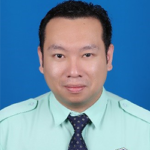
Sarawak Heart Centre, Malaysia
Current Position
Chief Perfusionist
Biosketch
Andy Sherman Khung is a Grade U32 Assistant Medical Officer and the Chief Perfusionist in the Department of Anaesthesiology and Intensive Care, Sarawak Heart Centre, Ministry of Health, Malaysia. He completed a Diploma in Assistant Medical Officer in Kuching and a Bachelor Honours Degree in Health Practice Development in 2012 from MAHSA University College. In 2015, he completed the Advanced Diploma in Cardiovascular Health (Perfusion) at Penang Nursing College. He has more than 13 years of experience in cardiovascular perfusion.
Setting up a complete ideal ECMO (Extracorporeal Membrane Oxygenation) machine and its circuits is a complex and life-saving procedure used in critical care situations. This topic discusses an overview of the essential steps involved in this process, emphasizing the need for professional expertise and clinical setting. ECMO is employed for patients with severe heart or lung failure, and its setup should only be performed by trained medical personnel. Key steps include preparation, machine and its accessories setup, cannula insertion, circuit connection, and oxygenator setup. Strict adherence to protocols and guidelines is imperative to ensure patient safety and successful ECMO support.

Sarawak Heart Centre, Malaysia
Current Position
Chief Perfusionist
Biosketch
Andy Sherman Khung is a Grade U32 Assistant Medical Officer and the Chief Perfusionist in the Department of Anaesthesiology and Intensive Care, Sarawak Heart Centre, Ministry of Health, Malaysia. He completed a Diploma in Assistant Medical Officer in Kuching and a Bachelor Honours Degree in Health Practice Development in 2012 from MAHSA University College. In 2015, he completed the Advanced Diploma in Cardiovascular Health (Perfusion) at Penang Nursing College. He has more than 13 years of experience in cardiovascular perfusion.
Setting up a complete ideal ECMO (Extracorporeal Membrane Oxygenation) machine and its circuits is a complex and life-saving procedure used in critical care situations. This topic discusses an overview of the essential steps involved in this process, emphasizing the need for professional expertise and clinical setting. ECMO is employed for patients with severe heart or lung failure, and its setup should only be performed by trained medical personnel. Key steps include preparation, machine and its accessories setup, cannula insertion, circuit connection, and oxygenator setup. Strict adherence to protocols and guidelines is imperative to ensure patient safety and successful ECMO support.
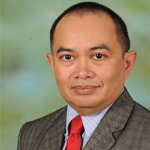
School of Medical Sciences, Universiti Sains Malaysia, Kelantan, Malaysia
Current Position
Senior Consultant Cardiothoracic Anesthesiologist
Biosketch
Dr Ariffin Marzuki bin Mokhtar is a National Specialist Registered Anaesthesiologist that graduated from the Universiti Kebangsaan Malaysia (UKM) in 2002 and is currently lecturing Medicine at the School of Medical Sciences, Universiti Sains Malaysia. His clinical specialty is Cardiothoracic Anaesthesia and Critical Care with an interest in Pain Management, Extra-corporeal Membrane Oxygenation and Mechanical Circulatory Support.
Apart from clinical expertise, Dr Ariffin is a Certified IT Architect -Associate: Business Architecture (CITA-A, IASA), COBIT 5 (ISACA) and TOGAF 9.1 (Open Group) Certified. He also serve as the ICT Co-ordinator for Hospital USM, where he co-ordinates the ICT initiative of the hospital by managing multiple stakeholders and providers to ensure value-delivery in the ICT initiatives for the hospital in terms of patient and student centricity, staff competency building and developing a resilient knowledge management system.
Dr Ariffin is a member of the Malaysian Society of Anaesthesiologists (MSA), the Medicolegal Society of Malaysia (MLSM), and the International Association of IT Architects (IASA), Malaysian Chapter.
Previously he was a Consultant Anaesthesiologist at the Institut Jantung Negara, in Kuala Lumpur. He was involved in the Enterprise Architecture, JCI, MSQH, ISO and HACCP accreditation activities of the institute as the Director of Health Informatics.
He has delivered lectures on diverse topics from Pain Management in Cardiac Patients, Management of Heart and Lung Transplantations, Extra-Corporeal Membrane Oxygenation Management to the Use of IT in Clinical Practice, Clinical Governance, Standards and Quality of Care, Information Management for Public Health, Health Informatics, Critical Care Information Systems and Enterprise Architecture.
He has published topics on diverse topics such as the Management of Pain in the Post-operative Patient, Perioperative Management of Patients with Ischemic Heart Disease Undergoing non-Cardiac Surgery, Evaluation of the clinical process in a critical care information system using the lean method: a case study and other topics related to cardiac anaesthesia and management.
His current interests are the use of technology as an enabling tool to deliver high quality and safe care to patients including competency building of healthcare providers in using technology tools, development of clinical pathways, modelling clinical care, performance measure, healthcare organization transformation governance and management, healthcare business architecture, activity based costing and financial management.
COMING SOON

School of Medical Sciences, Universiti Sains Malaysia, Kelantan, Malaysia
Current Position
Senior Consultant Cardiothoracic Anesthesiologist
Biosketch
Dr Ariffin Marzuki bin Mokhtar is a National Specialist Registered Anaesthesiologist that graduated from the Universiti Kebangsaan Malaysia (UKM) in 2002 and is currently lecturing Medicine at the School of Medical Sciences, Universiti Sains Malaysia. His clinical specialty is Cardiothoracic Anaesthesia and Critical Care with an interest in Pain Management, Extra-corporeal Membrane Oxygenation and Mechanical Circulatory Support.
Apart from clinical expertise, Dr Ariffin is a Certified IT Architect -Associate: Business Architecture (CITA-A, IASA), COBIT 5 (ISACA) and TOGAF 9.1 (Open Group) Certified. He also serve as the ICT Co-ordinator for Hospital USM, where he co-ordinates the ICT initiative of the hospital by managing multiple stakeholders and providers to ensure value-delivery in the ICT initiatives for the hospital in terms of patient and student centricity, staff competency building and developing a resilient knowledge management system.
Dr Ariffin is a member of the Malaysian Society of Anaesthesiologists (MSA), the Medicolegal Society of Malaysia (MLSM), and the International Association of IT Architects (IASA), Malaysian Chapter.
Previously he was a Consultant Anaesthesiologist at the Institut Jantung Negara, in Kuala Lumpur. He was involved in the Enterprise Architecture, JCI, MSQH, ISO and HACCP accreditation activities of the institute as the Director of Health Informatics.
He has delivered lectures on diverse topics from Pain Management in Cardiac Patients, Management of Heart and Lung Transplantations, Extra-Corporeal Membrane Oxygenation Management to the Use of IT in Clinical Practice, Clinical Governance, Standards and Quality of Care, Information Management for Public Health, Health Informatics, Critical Care Information Systems and Enterprise Architecture.
He has published topics on diverse topics such as the Management of Pain in the Post-operative Patient, Perioperative Management of Patients with Ischemic Heart Disease Undergoing non-Cardiac Surgery, Evaluation of the clinical process in a critical care information system using the lean method: a case study and other topics related to cardiac anaesthesia and management.
His current interests are the use of technology as an enabling tool to deliver high quality and safe care to patients including competency building of healthcare providers in using technology tools, development of clinical pathways, modelling clinical care, performance measure, healthcare organization transformation governance and management, healthcare business architecture, activity based costing and financial management.
COMING SOON

Sarawak Heart Centre, Malaysia
Current Position
Senior Consultant Cardiothoracic Anesthesiologist and Head of the Department of Anaesthesiology and Intensive Care at Sarawak Heart Centre, Malaysia.
Biodata
Dr. Hasmizy Muhammad is a Senior Consultant Cardiothoracic Anesthesiologist and Head of the Department of Anaesthesiology and Intensive Care at Sarawak Heart Centre, Malaysia. He received a medical degree in 1998 and a Master of Medicine (Anaesthesiology) in 2006 from University Science Malaysia. He was trained in cardiac anaesthesia and perfusion at Sarawak General Hospital in 2008 and at Konkuk University Medical Centre, Seoul, South Korea, in 2011. He obtained the Graduate Diploma in Clinical Ultrasound from the University of Melbourne in 2016, a Master in Business Administration from University Tun Abdul Razak in 2022, the Leadership in Medicine: Southeast Asia Certificate Program from Harvard Medical School in 2023 and gained experience in ECMO at the University Hospital Regensburg (Germany) and paediatric cardiac anaesthesia at the Royal Brompton Hospital (UK).
Dr. Hasmizy Muhammad is the Sarawak State Anaesthesiologist, the Head of the Parallel Pathway Anaesthesia Specialist Training Programme, and the Deputy Head of Cardiothoracic Anaesthesiology and Perfusion Services at the Ministry of Health of Malaysia. He is also the President-Elect of the Malaysian Society of Anaesthesiologists, the Secretary of the College of Anaesthesiologists, Academy of Medicine of Malaysia, the Vice President of the Malaysian Cardiothoracic Anaesthesiology and Perfusion Society (MASCAP), and the Chairman of the Sarawak Perfusion Society. He is an examiner for the Master of Medicine (Anaesthesiology) programme conducted by Malaysia's Board of Examination of Anaesthesiology and Intensive Care. Dr. Hasmizy Muhammad is actively involved in teaching and training in the fields of anesthesiology, perfusion, and echocardiography.
Imaging of ECMO: What, How and When?
The extracorporeal membrane oxygenation cannulation withdraws deoxygenated blood from a venous vessel and returns oxygenated blood to either a venous vessel, the right atrium, or the arterial vessel.
Transthoracic echocardiography (TTE) and transesophageal echocardiography (TEE) play important roles during initial cannula placement.
Ultrasound can be used to evaluate for insertion site hematomas, peri-cannula thrombus, or deep venous thrombus. Spectral color Doppler is a powerful tool to evaluate distal limb perfusion.
The chest and abdomen radiographs are useful for assessing the cannula position. The radiographs may reveal malposition or unintended migration and be able to show complications such as hemothorax, pneumothorax, or mediastinal fluid collections.
CT scan is reserved for the evaluation of complications that cannot be fully evaluated by radiographs, ultrasound, or Doppler imaging.
Transfusion Practices in ECMO
Extracorporeal membrane oxygenation (ECMO) is associated with reductions in haemoglobin, platelet count, and fibrinogen and usually causes coagulopathy and bleeding, which may necessitate the transfusion of several blood components.
Blood transfusions are known to increase morbidity and mortality, as well as hospital costs. Patients supported with VA ECMO are more likely to receive a PRBC transfusion compared to those on VV ECMO.
One study found that more PRBC transfusion when haemoglobin was less than 7 g/dL and higher thresholds in for older patients, patients with new-onset kidney failure, and those with reduced extracorporeal blood flow rate to estimated cardiac output ratio.
The study also found that a high transfusion rate was linked to a positive fluid balance, higher cardiovascular items of the sequential organ failure assessment score, higher pH, bleeding, and ECMO circuit change.

Sarawak Heart Centre, Malaysia
Current Position
Senior Consultant Cardiothoracic Anesthesiologist and Head of the Department of Anaesthesiology and Intensive Care at Sarawak Heart Centre, Malaysia.
Biodata
Dr. Hasmizy Muhammad is a Senior Consultant Cardiothoracic Anesthesiologist and Head of the Department of Anaesthesiology and Intensive Care at Sarawak Heart Centre, Malaysia. He received a medical degree in 1998 and a Master of Medicine (Anaesthesiology) in 2006 from University Science Malaysia. He was trained in cardiac anaesthesia and perfusion at Sarawak General Hospital in 2008 and at Konkuk University Medical Centre, Seoul, South Korea, in 2011. He obtained the Graduate Diploma in Clinical Ultrasound from the University of Melbourne in 2016, a Master in Business Administration from University Tun Abdul Razak in 2022, the Leadership in Medicine: Southeast Asia Certificate Program from Harvard Medical School in 2023 and gained experience in ECMO at the University Hospital Regensburg (Germany) and paediatric cardiac anaesthesia at the Royal Brompton Hospital (UK).
Dr. Hasmizy Muhammad is the Sarawak State Anaesthesiologist, the Head of the Parallel Pathway Anaesthesia Specialist Training Programme, and the Deputy Head of Cardiothoracic Anaesthesiology and Perfusion Services at the Ministry of Health of Malaysia. He is also the President-Elect of the Malaysian Society of Anaesthesiologists, the Secretary of the College of Anaesthesiologists, Academy of Medicine of Malaysia, the Vice President of the Malaysian Cardiothoracic Anaesthesiology and Perfusion Society (MASCAP), and the Chairman of the Sarawak Perfusion Society. He is an examiner for the Master of Medicine (Anaesthesiology) programme conducted by Malaysia's Board of Examination of Anaesthesiology and Intensive Care. Dr. Hasmizy Muhammad is actively involved in teaching and training in the fields of anesthesiology, perfusion, and echocardiography.
Imaging of ECMO: What, How and When?
The extracorporeal membrane oxygenation cannulation withdraws deoxygenated blood from a venous vessel and returns oxygenated blood to either a venous vessel, the right atrium, or the arterial vessel.
Transthoracic echocardiography (TTE) and transesophageal echocardiography (TEE) play important roles during initial cannula placement.
Ultrasound can be used to evaluate for insertion site hematomas, peri-cannula thrombus, or deep venous thrombus. Spectral color Doppler is a powerful tool to evaluate distal limb perfusion.
The chest and abdomen radiographs are useful for assessing the cannula position. The radiographs may reveal malposition or unintended migration and be able to show complications such as hemothorax, pneumothorax, or mediastinal fluid collections.
CT scan is reserved for the evaluation of complications that cannot be fully evaluated by radiographs, ultrasound, or Doppler imaging.
Transfusion Practices in ECMO
Extracorporeal membrane oxygenation (ECMO) is associated with reductions in haemoglobin, platelet count, and fibrinogen and usually causes coagulopathy and bleeding, which may necessitate the transfusion of several blood components.
Blood transfusions are known to increase morbidity and mortality, as well as hospital costs. Patients supported with VA ECMO are more likely to receive a PRBC transfusion compared to those on VV ECMO.
One study found that more PRBC transfusion when haemoglobin was less than 7 g/dL and higher thresholds in for older patients, patients with new-onset kidney failure, and those with reduced extracorporeal blood flow rate to estimated cardiac output ratio.
The study also found that a high transfusion rate was linked to a positive fluid balance, higher cardiovascular items of the sequential organ failure assessment score, higher pH, bleeding, and ECMO circuit change.
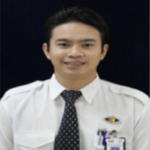
Sarawak Heart Centre
Current Position
Perfusionist
Biosketch
Jay Jay Fernandez is an Assistant Medical Officer working in the Department of Anesthesiology and Intensive Care of Sarawak Heart Centre as a clinical perfusionist with an experience of 11 years in the field. He had a Diploma In Medical Assistant from Allied Health College and an Advanced Diploma in Cardiovascular Healthcare with a specialty in perfusion under the Ministry of Health program. In the early days of working experience, he worked in the emergency department of Hospital Sibu and as an anaesthetic medical assistant in the Sarawak General Hospital. He is credentialed as Assistant Medical Officer in Cardiovascular Perfusion and a member of the Malaysia Perfusionist Society.
Extra-corporeal membrane oxygenation ( ECMO ) is a technique used to provide support to patients with severe, but potentially reversible pulmonary and/or cardiac failure. Therefore under conduct of ECMO, ECMO initiation comprises the process of establishing the patient on ECMO support.

Sarawak Heart Centre
Current Position
Perfusionist
Biosketch
Jay Jay Fernandez is an Assistant Medical Officer working in the Department of Anesthesiology and Intensive Care of Sarawak Heart Centre as a clinical perfusionist with an experience of 11 years in the field. He had a Diploma In Medical Assistant from Allied Health College and an Advanced Diploma in Cardiovascular Healthcare with a specialty in perfusion under the Ministry of Health program. In the early days of working experience, he worked in the emergency department of Hospital Sibu and as an anaesthetic medical assistant in the Sarawak General Hospital. He is credentialed as Assistant Medical Officer in Cardiovascular Perfusion and a member of the Malaysia Perfusionist Society.
Extra-corporeal membrane oxygenation ( ECMO ) is a technique used to provide support to patients with severe, but potentially reversible pulmonary and/or cardiac failure. Therefore under conduct of ECMO, ECMO initiation comprises the process of establishing the patient on ECMO support.

Hospital Sultan Idris Shah, Serdang, Malaysia
Current Position
Consultant Cardiothoracic Anaesthesiologist
Biosketch
Dr Lee Kok Tong received both his medical degree (2009) and postgraduate professional clinical degree in Anaesthesia and Critical Care training (2017) from University of science ,Malaysia. He completed his sub specialty training in Cardiothoracic Anaesthesia andmperfusion with a Fellowship from the Ministry of Health, Malaysia and National UniversitymHospital of Singapore (NUHS) 2022. During his sub specialty training , he had gained experience in managing ECMO.
He is member of the College of Anaesthesiologists, Academy of Medicine of Malaysia (AMM), The Malaysia Society of Cardiothoracic Anaesthesia and Perfusion society (MASCAP). A committee member of Cardiothoracic Anaesthesia and Perfusion Society, Hospital Serdang.
On the Road to Recovery: Decannulation
After successful Weaning of ECMO, and catheter removal should be carried out carefully. Since various complications may occur after removal, intensive observation should be carried out for a certain period of time. We discussed various methods of decannulation of ECMO cannulas.
Keywords: venous-arterial extracorporeal membrane oxygenation, weaning, weaning strategy, decannulation, ECMO
Haemodynamic Monitoring
Hemodynamic monitoring in ECMO patients is to provide information about the adequacy of organs and peripheral perfusion, requires familiarity with the underlying pathophysiology and circulatory mechanics of extracorporeal flow. We discussed the various monitoring modalities relevant to the management of patients on venovenous ECMO (VV ECMO) and venoarterial (VA ECMO). We discussed how differences between VV ECMO and VA ECMO are reflected in distinct approaches to monitoring

Hospital Sultan Idris Shah, Serdang, Malaysia
Current Position
Consultant Cardiothoracic Anaesthesiologist
Biosketch
Dr Lee Kok Tong received both his medical degree (2009) and postgraduate professional clinical degree in Anaesthesia and Critical Care training (2017) from University of science ,Malaysia. He completed his sub specialty training in Cardiothoracic Anaesthesia andmperfusion with a Fellowship from the Ministry of Health, Malaysia and National UniversitymHospital of Singapore (NUHS) 2022. During his sub specialty training , he had gained experience in managing ECMO.
He is member of the College of Anaesthesiologists, Academy of Medicine of Malaysia (AMM), The Malaysia Society of Cardiothoracic Anaesthesia and Perfusion society (MASCAP). A committee member of Cardiothoracic Anaesthesia and Perfusion Society, Hospital Serdang.
On the Road to Recovery: Decannulation
After successful Weaning of ECMO, and catheter removal should be carried out carefully. Since various complications may occur after removal, intensive observation should be carried out for a certain period of time. We discussed various methods of decannulation of ECMO cannulas.
Keywords: venous-arterial extracorporeal membrane oxygenation, weaning, weaning strategy, decannulation, ECMO
Haemodynamic Monitoring
Hemodynamic monitoring in ECMO patients is to provide information about the adequacy of organs and peripheral perfusion, requires familiarity with the underlying pathophysiology and circulatory mechanics of extracorporeal flow. We discussed the various monitoring modalities relevant to the management of patients on venovenous ECMO (VV ECMO) and venoarterial (VA ECMO). We discussed how differences between VV ECMO and VA ECMO are reflected in distinct approaches to monitoring

Hospital Pulau Pinang, Malaysia
Current Position
Consultant Intensivist
Biosketch
Dr Lim Chew Har has been a Consultant Intensivist at Hospital Pulau Pinang since 2005.
CRRT on ECMO
Patients treated with ECMO are among the most severely ill encountered in critical care. They are at high‐risk of developing multiple organ dysfunction, including acute kidney injury (AKI) and fluid overload. Incidence of AKI can be as high as 70%–85% of ECMO patients and those with AKI and those who require renal replacement therapy (RRT) are at high risk for mortality, independent of potentially confounding variables. Recent evidence suggest that therapies to prevent/ameliorate AKI and optimization of RRT could improve outcomes.
Indications for renal replacement therapy for patients on ECMO are similar to those of other critically ill populations. Fluid overload is common in ECMO patients and it’s one of the main indications for RRT. The other main indication is to maintain fluid balance and metabolic control.
For the ECMO patients who require RRT, continuous renal replacement therapy (CRRT) is increasingly being utilized. The patients are usually too unstable for intermittent haemodialysis (IHD) or prolonged intermittent renal replacement therapy (PIRRT).
For patients requiring both CRRT and ECMO, CRRT may be connected directly to the ECMO circuit, or CRRT and ECMO may be performed independently.
Withdrawal of ECMO support
Extracorporeal membrane oxygenation (ECMO) can serve as a bridge to recovery in cases of acute reversible illness, a bridge to transplantation in circumstances of irreversible cardiac or respiratory failure, a bridge to ventricular assist device therapy in select cases of cardiac failure, or a bridge to decision when the prognosis remains uncertain. It is typically viewed as a time-limited intervention-a bridge to recovery or transplant-not a destination therapy.
This increasing use of a technology that is not a destination device in itself introduces many ethical dilemmas specific to this technology. Some patients with decision-making capacity may request for continuation of ECMO support despite a poor prognosis for recovery and lack of viability as a transplant candidate. The ethical permissibility of unilateral withdrawal over the objections of a capacitated patient is a real challenge.
In this lecture, we will evaluate several ethical arguments that have been made regarding withdrawal of ECMO support, including distributive justice, quality of life, patients’ rights, professional integrity, and the Equivalence Thesis.

Hospital Pulau Pinang, Malaysia
Current Position
Consultant Intensivist
Biosketch
Dr Lim Chew Har has been a Consultant Intensivist at Hospital Pulau Pinang since 2005.
CRRT on ECMO
Patients treated with ECMO are among the most severely ill encountered in critical care. They are at high‐risk of developing multiple organ dysfunction, including acute kidney injury (AKI) and fluid overload. Incidence of AKI can be as high as 70%–85% of ECMO patients and those with AKI and those who require renal replacement therapy (RRT) are at high risk for mortality, independent of potentially confounding variables. Recent evidence suggest that therapies to prevent/ameliorate AKI and optimization of RRT could improve outcomes.
Indications for renal replacement therapy for patients on ECMO are similar to those of other critically ill populations. Fluid overload is common in ECMO patients and it’s one of the main indications for RRT. The other main indication is to maintain fluid balance and metabolic control.
For the ECMO patients who require RRT, continuous renal replacement therapy (CRRT) is increasingly being utilized. The patients are usually too unstable for intermittent haemodialysis (IHD) or prolonged intermittent renal replacement therapy (PIRRT).
For patients requiring both CRRT and ECMO, CRRT may be connected directly to the ECMO circuit, or CRRT and ECMO may be performed independently.
Withdrawal of ECMO support
Extracorporeal membrane oxygenation (ECMO) can serve as a bridge to recovery in cases of acute reversible illness, a bridge to transplantation in circumstances of irreversible cardiac or respiratory failure, a bridge to ventricular assist device therapy in select cases of cardiac failure, or a bridge to decision when the prognosis remains uncertain. It is typically viewed as a time-limited intervention-a bridge to recovery or transplant-not a destination therapy.
This increasing use of a technology that is not a destination device in itself introduces many ethical dilemmas specific to this technology. Some patients with decision-making capacity may request for continuation of ECMO support despite a poor prognosis for recovery and lack of viability as a transplant candidate. The ethical permissibility of unilateral withdrawal over the objections of a capacitated patient is a real challenge.
In this lecture, we will evaluate several ethical arguments that have been made regarding withdrawal of ECMO support, including distributive justice, quality of life, patients’ rights, professional integrity, and the Equivalence Thesis.

Hospital Pulau Pinang, Malaysia
Current Position
Consultant Cardiothoracic Anaesthesiologist
Biosketch
Dr Maseeda binti Mohamed Yusof, is currently a Cardiothoracic Anaesthesiology Consultant in Cardiothoracic and Perfusion Unit of Hospital Pulau Pinang. She started her medical career as a house officer at Kuantan’s Tengku Ampuan Afzan Hospital in 2000. She then worked as a district medical officer at Paris Buntar Hospital, Perak in 2001. She joined Penang Hospital’s Anaesthesia department in 2002 and had been there since. She completed her Masters in Anaesthesia in 2010, where she received one year training as in-house Masters trainee in University Kebangsaan Malaysia Medical Centre in 2009.
Upon obtaining her Masters degree in Anaesthesia, she served in Langkawi Hospital, Kedah in 2009 as as a fully qualified Anaesthesiologist and Head of Unit.
Dr Maseeda binti Mohamed Yusof joined the Cardiothoracic Anaesthesia, Penang Hospital in the year 2012. Dr Maseeda has experienced as a distinguished speaker at several conferences and Scientific Meeting. Currently, she is the Head of Unit Perolehan Organ in Hospital Pulau Pinang since August 2022.
An Neurological Monitoring During ECMO
According to from Extracorporeal Life Support Organization (ELSO) Registry, VA ECMO compared to VV-ECMO has a higher neurological complications, for example, due to loss of pulsatile cerebral blood flow, decreased cerebral autoregulation, and circuit-associated emboli.
The severity of illness prior to ECMO may increase the risk of neurologic injuries, such as pre-ECMO cardiac arrest, use of inotrope on ECMO, and hypoglycemia as risk factors for brain injury. Eightfold increased risk for AIS if the pre-ECMO lactates were above 10 mmol/L and an 18-fold increased risk for ICH in patients with thrombocytopenia.
Neurological monitoring in ECMO patients present many challenges in terms of clinical management and neuroimaging. Neurological examinations are often affected by sedatives and sometimes paralytics. Abrupt reduction in CO2 blood levels during the initiation of ECMO may affect the regulation of cerebral blood flow. Safe transport of a haemodynamically unstable ECMO patient is challenging.
The ECMO machinery itself is incompatible with MRI. Bedside neuroimaging such as EEG, Transcranial Dopplers, and SSEP, although are ideal, but are not widely available,
Kazmi et al. described a neuro-surveillance protocol that incorporates NCCT, TCD, EEG, and NIRS in combination with goal-directed anticoagulation monitoring and a multidisciplinary team-based approach for neurological monitoring in ECMO patients.

Hospital Pulau Pinang, Malaysia
Current Position
Consultant Cardiothoracic Anaesthesiologist
Biosketch
Dr Maseeda binti Mohamed Yusof, is currently a Cardiothoracic Anaesthesiology Consultant in Cardiothoracic and Perfusion Unit of Hospital Pulau Pinang. She started her medical career as a house officer at Kuantan’s Tengku Ampuan Afzan Hospital in 2000. She then worked as a district medical officer at Paris Buntar Hospital, Perak in 2001. She joined Penang Hospital’s Anaesthesia department in 2002 and had been there since. She completed her Masters in Anaesthesia in 2010, where she received one year training as in-house Masters trainee in University Kebangsaan Malaysia Medical Centre in 2009.
Upon obtaining her Masters degree in Anaesthesia, she served in Langkawi Hospital, Kedah in 2009 as as a fully qualified Anaesthesiologist and Head of Unit.
Dr Maseeda binti Mohamed Yusof joined the Cardiothoracic Anaesthesia, Penang Hospital in the year 2012. Dr Maseeda has experienced as a distinguished speaker at several conferences and Scientific Meeting. Currently, she is the Head of Unit Perolehan Organ in Hospital Pulau Pinang since August 2022.
An Neurological Monitoring During ECMO
According to from Extracorporeal Life Support Organization (ELSO) Registry, VA ECMO compared to VV-ECMO has a higher neurological complications, for example, due to loss of pulsatile cerebral blood flow, decreased cerebral autoregulation, and circuit-associated emboli.
The severity of illness prior to ECMO may increase the risk of neurologic injuries, such as pre-ECMO cardiac arrest, use of inotrope on ECMO, and hypoglycemia as risk factors for brain injury. Eightfold increased risk for AIS if the pre-ECMO lactates were above 10 mmol/L and an 18-fold increased risk for ICH in patients with thrombocytopenia.
Neurological monitoring in ECMO patients present many challenges in terms of clinical management and neuroimaging. Neurological examinations are often affected by sedatives and sometimes paralytics. Abrupt reduction in CO2 blood levels during the initiation of ECMO may affect the regulation of cerebral blood flow. Safe transport of a haemodynamically unstable ECMO patient is challenging.
The ECMO machinery itself is incompatible with MRI. Bedside neuroimaging such as EEG, Transcranial Dopplers, and SSEP, although are ideal, but are not widely available,
Kazmi et al. described a neuro-surveillance protocol that incorporates NCCT, TCD, EEG, and NIRS in combination with goal-directed anticoagulation monitoring and a multidisciplinary team-based approach for neurological monitoring in ECMO patients.

Hospital Sultan Idris Shah, Serdang, Malaysia
Education
BSc, MB BCh BAO (NUI), Dr Anaesth & Crit. Care (UKM)
Biosketch
Dr Mazlilah Abdul Malek received her medical degree in 2006 from the National University of Ireland and Dr Anaesth & Critical Care from the National University of Malaysia in 2015. With more than 10 years of experience in Anaesthesiology & Intensive Care, she is currently a Consultant Cardiothoracic Anaesthesiologist in Hospital Sultan Idris Shah, Serdang. Prior to her current position, she had worked at the Penang General Hospital (PGH), Penang and Tawau Hospital, Sabah.
Dr Mazlilah completed her subspecialty training in Cardiothoracic Anaesthesia & Cardiac Intensive Care with a fellowship from the University Hospital Southampton (UHS), Southampton, UK in 2021 as well as Cardiothoracic Anaesthesia & Perfusion from the Ministry of Health, Malaysia with special interest in paediatric cardiac anaesthesia. During her subspecialty training in the UK, Dr Mazlilah had gained extensive experience in managing ECMO and is also certified in adult transoesophageal echocardiography by the European Association of Cardiovascular Imaging (EACVI).
She is a member of the College of Anaesthesiologists, Academy of Medicine of Malaysia (AMM), the Malaysian Society of Cardiothoracic Anaesthesiology & Perfusion (MASCAP), and a committee member of the Cardiothoracic Anaesthesia & Perfusion Society, Hospital Serdang.
Apart from work, she is an avid scuba diver who also enjoys hiking, literally loving both the mountains & the sea.
Mobilising the ECMO Patients in Everyday Care
ECMO is an advanced, invasive, life-saving therapy that temporarily supports patients in severe respiratory, cardiac or combined cardiorespiratory failures. This modality involves many cannulas, circuits and an ECMO machine that are connected to the patient. Mobilising an ECMO patient in everyday care can be daunting and extremely challenging for any health care workers. Besides having critically ill patients, any dislodgement, kinking of the cannulas, circuits or any part of the ECMO machine may cause significant morbidity or even be fatal. Hence mobilising ECMO patients need to be done by a team of trained personnel who are well versed in the care, the circuits as well as knowledge on how the ECMO machine operates. The key to safe mobilisation of ECMO patients would include good preparation, team communication and should be done with extreme care and caution.
Sedation and Pain Control
Sedation and pain control management in patients receiving ECMO is challenging. There are many factors that affect the pharmacokinetics of drugs once they are administered to patients receiving ECMO and can be unpredictable depending on the patients’ body habitus, ECMO flow, circuit length, age as well as the degree of severity of these critically ill patients. Although health care workers caring for these ECMO patients will be concern with any patient’s movements which may cause dislodgement and kinking of the cannulas and circuits, heavy sedation is no longer a common practice in many ECMO centres. A good balance between preventing complications and providing comfort to patients is needed in order facilitate their recovery.

Hospital Sultan Idris Shah, Serdang, Malaysia
Education
BSc, MB BCh BAO (NUI), Dr Anaesth & Crit. Care (UKM)
Biosketch
Dr Mazlilah Abdul Malek received her medical degree in 2006 from the National University of Ireland and Dr Anaesth & Critical Care from the National University of Malaysia in 2015. With more than 10 years of experience in Anaesthesiology & Intensive Care, she is currently a Consultant Cardiothoracic Anaesthesiologist in Hospital Sultan Idris Shah, Serdang. Prior to her current position, she had worked at the Penang General Hospital (PGH), Penang and Tawau Hospital, Sabah.
Dr Mazlilah completed her subspecialty training in Cardiothoracic Anaesthesia & Cardiac Intensive Care with a fellowship from the University Hospital Southampton (UHS), Southampton, UK in 2021 as well as Cardiothoracic Anaesthesia & Perfusion from the Ministry of Health, Malaysia with special interest in paediatric cardiac anaesthesia. During her subspecialty training in the UK, Dr Mazlilah had gained extensive experience in managing ECMO and is also certified in adult transoesophageal echocardiography by the European Association of Cardiovascular Imaging (EACVI).
She is a member of the College of Anaesthesiologists, Academy of Medicine of Malaysia (AMM), the Malaysian Society of Cardiothoracic Anaesthesiology & Perfusion (MASCAP), and a committee member of the Cardiothoracic Anaesthesia & Perfusion Society, Hospital Serdang.
Apart from work, she is an avid scuba diver who also enjoys hiking, literally loving both the mountains & the sea.
Mobilising the ECMO Patients in Everyday Care
ECMO is an advanced, invasive, life-saving therapy that temporarily supports patients in severe respiratory, cardiac or combined cardiorespiratory failures. This modality involves many cannulas, circuits and an ECMO machine that are connected to the patient. Mobilising an ECMO patient in everyday care can be daunting and extremely challenging for any health care workers. Besides having critically ill patients, any dislodgement, kinking of the cannulas, circuits or any part of the ECMO machine may cause significant morbidity or even be fatal. Hence mobilising ECMO patients need to be done by a team of trained personnel who are well versed in the care, the circuits as well as knowledge on how the ECMO machine operates. The key to safe mobilisation of ECMO patients would include good preparation, team communication and should be done with extreme care and caution.
Sedation and Pain Control
Sedation and pain control management in patients receiving ECMO is challenging. There are many factors that affect the pharmacokinetics of drugs once they are administered to patients receiving ECMO and can be unpredictable depending on the patients’ body habitus, ECMO flow, circuit length, age as well as the degree of severity of these critically ill patients. Although health care workers caring for these ECMO patients will be concern with any patient’s movements which may cause dislodgement and kinking of the cannulas and circuits, heavy sedation is no longer a common practice in many ECMO centres. A good balance between preventing complications and providing comfort to patients is needed in order facilitate their recovery.

National heart Institute, Malaysia
Current Position
Specialist Physiotherapist
Biodata
Specialist Physiotherapist with over 12 years of specialized experience in the realm of cardiac and critical care rehabilitation. He adeptly manages intricate cases encompassing heart transplantation, LVAD implantation, ECMO therapy, and diverse cardio-respiratory conditions. Currently positioned at Malaysia's esteemed National Heart Institute. Holds a Master's degree in Physiotherapy, with a focus on Cardiorespiratory specialization.
At the National Heart Institute, Hafizi led the Critical Care Physiotherapy division, orchestrating staff development, training, and competency enhancement. Certified mentor and lecturer, actively contributes to the development of critical care physiotherapy practices, ensuring the continuous development of his peers. Commitment extends beyond clinical practice. He served as an executive member of the Cardiovascular & Pulmonary Group (CVPG) within the Malaysia Physiotherapy Association, advocating for best practices and knowledge exchange.
Prolonged immobilization during ECMO therapy can lead to muscle atrophy, joint contractures, reduced bone density, and cardiovascular deconditioning. Additionally, the complex medical management of ECMO patients, including sedation and muscle relaxants, can further exacerbate these challenges. These physical complications can significantly hinder a patient's ability to regain functional independence and may lead to an extended stay in the intensive care unit (ICU), increased healthcare costs, and a higher risk of long-term disability.
The integration of early and progressive rehabilitation into the ECMO patient care plan can mitigate the adverse effects of immobility and promote a swifter return to functional status. Physiotherapy interventions in the ECMO setting encompass a range of strategies, including passive range of motion exercises, active resistive exercises, neuromuscular electrical stimulation, cardiovascular conditioning, and patient mobilization. These interventions are tailored to the patient's medical status, level of consciousness, and individual goals, with the overarching aim of preventing and minimizing physical deconditioning.
The integration of early and progressive rehabilitation into the ECMO patient care plan can mitigate the adverse effects of immobility and promote a swifter return to functional status. Physiotherapy interventions in the ECMO setting encompass a range of strategies, including passive range of motion exercises, active resistive exercises, neuromuscular electrical stimulation, cardiovascular conditioning, and patient mobilization. These interventions are tailored to the patient's medical status, level of consciousness, and individual goals, with the overarching aim of preventing and minimizing physical deconditioning.

National heart Institute, Malaysia
Current Position
Specialist Physiotherapist
Biodata
Specialist Physiotherapist with over 12 years of specialized experience in the realm of cardiac and critical care rehabilitation. He adeptly manages intricate cases encompassing heart transplantation, LVAD implantation, ECMO therapy, and diverse cardio-respiratory conditions. Currently positioned at Malaysia's esteemed National Heart Institute. Holds a Master's degree in Physiotherapy, with a focus on Cardiorespiratory specialization.
At the National Heart Institute, Hafizi led the Critical Care Physiotherapy division, orchestrating staff development, training, and competency enhancement. Certified mentor and lecturer, actively contributes to the development of critical care physiotherapy practices, ensuring the continuous development of his peers. Commitment extends beyond clinical practice. He served as an executive member of the Cardiovascular & Pulmonary Group (CVPG) within the Malaysia Physiotherapy Association, advocating for best practices and knowledge exchange.
Prolonged immobilization during ECMO therapy can lead to muscle atrophy, joint contractures, reduced bone density, and cardiovascular deconditioning. Additionally, the complex medical management of ECMO patients, including sedation and muscle relaxants, can further exacerbate these challenges. These physical complications can significantly hinder a patient's ability to regain functional independence and may lead to an extended stay in the intensive care unit (ICU), increased healthcare costs, and a higher risk of long-term disability.
The integration of early and progressive rehabilitation into the ECMO patient care plan can mitigate the adverse effects of immobility and promote a swifter return to functional status. Physiotherapy interventions in the ECMO setting encompass a range of strategies, including passive range of motion exercises, active resistive exercises, neuromuscular electrical stimulation, cardiovascular conditioning, and patient mobilization. These interventions are tailored to the patient's medical status, level of consciousness, and individual goals, with the overarching aim of preventing and minimizing physical deconditioning.
The integration of early and progressive rehabilitation into the ECMO patient care plan can mitigate the adverse effects of immobility and promote a swifter return to functional status. Physiotherapy interventions in the ECMO setting encompass a range of strategies, including passive range of motion exercises, active resistive exercises, neuromuscular electrical stimulation, cardiovascular conditioning, and patient mobilization. These interventions are tailored to the patient's medical status, level of consciousness, and individual goals, with the overarching aim of preventing and minimizing physical deconditioning.

Hospital Sultanah Nur Zahirah, Kuala Terengganu, Malaysia
Current Position
Consultant Intensivist
Biosketch
Dr Ridhwan obtained his MD degree from Universiti Kebangsaan Malaysia in 1994. In 2001, he graduated as Anaesthetist from Universiti Sains Malaysia. He completed his intensive care training in 2008 and since then works as a Consultant Anaesthetist and Intensivist at Hospital Sultanah Nur Zahirah, Kuala Terengganu, Malaysia.
Acute respiratory distress syndrome (ARDS) is caused by heterogeneous disorder associated with a variety of disease processes that lead to acute lung injury (ALI). ALI is characterized by increased non-hydrostatic lung water, reduced compliance, and severe hypoxemia. The cornerstone of management of ARDS is lung-protective ventilation to prevent further injury which is known as Ventilator-Induced Lung Injury (VILI). Management of ARDS is constantly evolving as new studies are published and guidelines are updated. Prone position and ECMO are given strong recommendation in latest guidelines and several other interventions in previous guidelines are no longer recommended.

Hospital Sultanah Nur Zahirah, Kuala Terengganu, Malaysia
Current Position
Consultant Intensivist
Biosketch
Dr Ridhwan obtained his MD degree from Universiti Kebangsaan Malaysia in 1994. In 2001, he graduated as Anaesthetist from Universiti Sains Malaysia. He completed his intensive care training in 2008 and since then works as a Consultant Anaesthetist and Intensivist at Hospital Sultanah Nur Zahirah, Kuala Terengganu, Malaysia.
Acute respiratory distress syndrome (ARDS) is caused by heterogeneous disorder associated with a variety of disease processes that lead to acute lung injury (ALI). ALI is characterized by increased non-hydrostatic lung water, reduced compliance, and severe hypoxemia. The cornerstone of management of ARDS is lung-protective ventilation to prevent further injury which is known as Ventilator-Induced Lung Injury (VILI). Management of ARDS is constantly evolving as new studies are published and guidelines are updated. Prone position and ECMO are given strong recommendation in latest guidelines and several other interventions in previous guidelines are no longer recommended.
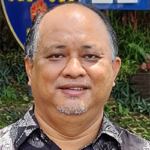
Penang Hospital, Malaysia
Education
M.B.B.S(Malaya) , M.Med(Anaesthesiolgy)USM
Fellowship In Cardiac Anaesthesia & Transplantation, Newcastle, UK
Biosketch
Dr Mohamad Hanafi Mohd is a Senior Consultant Cardiothoracic Anaesthesiologist and currently, the Head of Cardiothoracic Anaesthesiology & Perfusion Unit at Penang Hospital, Penang, Malaysia. He received his medical degree in 1996 from University Malaya later obtained his Master of Medicine in Anaesthesiology degree from Universiti Sains Malaysia in 2003. He was trained in Cardiac Anaesthesia & Perfusion at Penang Hospital from 2008 subsequently did his fellowship in Cardiac Anaesthesia & Transplantation at Freeman Hospital, Newcastle, UK in 2012. Had gained further ECMO experience at the University Hospital Regensburg, Germany before starting ECMO programme in Penang Hospital in 2014.
Dr Mohamad Hanafi is the Treasurer of Penang Perfusion Society, Committee Member of Malaysian Society of Cardiothoracic Anaesthesiology & Perfusion (MASCAP), Committee Member of Penang Heart Safe Society (PHSS) and an auditor for Malaysian Society of Anaesthesiologists (MSA)
CANDIDACY FOR ECMO
Extracorporeal Membrane Oxygenation (ECMO) is a life-saving therapy used to support patients with reversible severe respiratory or cardiac failure. Understanding the criteria for ECMO candidacy is vital for healthcare professionals, patients, and their families. This presentation provides a comprehensive overview of ECMO and explores the key factors that determine eligibility for ECMO support.
Common indications for ECMO will be highlighted, emphasizing the diverse range of patients it can benefit. A dedicated ECMO team, importance of a multidisciplinary approach to patient care.
The heart of the presentation focuses on ECMO candidacy criteria. We delve into the specific requirements for both respiratory and cardiac ECMO, discussing factors such as the severity of the condition, potential for recovery, and patient-specific considerations.
Assessing patient eligibility is a complex process, involving a thorough evaluation by the ECMO team. We explore the potential risks and benefits of ECMO therapy, acknowledging its life-saving potential while also recognizing associated complications.
The presentation concludes by stressing the significance of shared decision-making and informed consent in the ECMO candidacy process. By providing this comprehensive overview, we aim to empower healthcare professionals and inform patients and their families, ultimately improving outcomes for those facing severe respiratory or cardiac failure.
PATIENT-RELATED COMPLICATIONS AND MANAGEMENT
Putting a patient on ECMO is just the start of a the journey to recovery with its own set of complications and challenges. Complications can arise from the mechanical ECMO machine itself or patient-related. This presentation will focus on patient’s related complications that can arise during ECMO support and outlines effective management strategies.
Complications are categorized into several subtopics ie bleeding or hemorrhagc complications, thrombosis or clot in the patient or circuit, hemolytic, cannulation related complications, infections, acute kidney injury, and neurological complications. We delve into the specifics of each category, shedding light on the intricacies of ECMO care. Prevention, proactive monitoring and early detections are crucial elements of successful ECMO management.
In conclusion, this presentation aims to equip healthcare professionals with the knowledge and tools needed to navigate the complex landscape of patient-related complications during ECMO. By understanding the intricacies and implementing best practices, we can optimize patient care and improve patients outcomes.

Penang Hospital, Malaysia
Education
M.B.B.S(Malaya) , M.Med(Anaesthesiolgy)USM
Fellowship In Cardiac Anaesthesia & Transplantation, Newcastle, UK
Biosketch
Dr Mohamad Hanafi Mohd is a Senior Consultant Cardiothoracic Anaesthesiologist and currently, the Head of Cardiothoracic Anaesthesiology & Perfusion Unit at Penang Hospital, Penang, Malaysia. He received his medical degree in 1996 from University Malaya later obtained his Master of Medicine in Anaesthesiology degree from Universiti Sains Malaysia in 2003. He was trained in Cardiac Anaesthesia & Perfusion at Penang Hospital from 2008 subsequently did his fellowship in Cardiac Anaesthesia & Transplantation at Freeman Hospital, Newcastle, UK in 2012. Had gained further ECMO experience at the University Hospital Regensburg, Germany before starting ECMO programme in Penang Hospital in 2014.
Dr Mohamad Hanafi is the Treasurer of Penang Perfusion Society, Committee Member of Malaysian Society of Cardiothoracic Anaesthesiology & Perfusion (MASCAP), Committee Member of Penang Heart Safe Society (PHSS) and an auditor for Malaysian Society of Anaesthesiologists (MSA)
CANDIDACY FOR ECMO
Extracorporeal Membrane Oxygenation (ECMO) is a life-saving therapy used to support patients with reversible severe respiratory or cardiac failure. Understanding the criteria for ECMO candidacy is vital for healthcare professionals, patients, and their families. This presentation provides a comprehensive overview of ECMO and explores the key factors that determine eligibility for ECMO support.
Common indications for ECMO will be highlighted, emphasizing the diverse range of patients it can benefit. A dedicated ECMO team, importance of a multidisciplinary approach to patient care.
The heart of the presentation focuses on ECMO candidacy criteria. We delve into the specific requirements for both respiratory and cardiac ECMO, discussing factors such as the severity of the condition, potential for recovery, and patient-specific considerations.
Assessing patient eligibility is a complex process, involving a thorough evaluation by the ECMO team. We explore the potential risks and benefits of ECMO therapy, acknowledging its life-saving potential while also recognizing associated complications.
The presentation concludes by stressing the significance of shared decision-making and informed consent in the ECMO candidacy process. By providing this comprehensive overview, we aim to empower healthcare professionals and inform patients and their families, ultimately improving outcomes for those facing severe respiratory or cardiac failure.
PATIENT-RELATED COMPLICATIONS AND MANAGEMENT
Putting a patient on ECMO is just the start of a the journey to recovery with its own set of complications and challenges. Complications can arise from the mechanical ECMO machine itself or patient-related. This presentation will focus on patient’s related complications that can arise during ECMO support and outlines effective management strategies.
Complications are categorized into several subtopics ie bleeding or hemorrhagc complications, thrombosis or clot in the patient or circuit, hemolytic, cannulation related complications, infections, acute kidney injury, and neurological complications. We delve into the specifics of each category, shedding light on the intricacies of ECMO care. Prevention, proactive monitoring and early detections are crucial elements of successful ECMO management.
In conclusion, this presentation aims to equip healthcare professionals with the knowledge and tools needed to navigate the complex landscape of patient-related complications during ECMO. By understanding the intricacies and implementing best practices, we can optimize patient care and improve patients outcomes.

Hospital Sultan Idris Shah, Serdang, Malaysia
Current Position
Perfusionist
Biosketch
Muhammad Helmi is an assistant medical officer working in the Cardiothoracic Anesthesiology and Perfusion unit of Hospital Sultan Idris Shah as a clinical perfusionist with an experience of 9 years in the field. He had a Diploma In Medical Assistant from Allied Health College and an Advanced Diploma in Cardiovascular Healthcare with a specialty in perfusion under the Ministry of Health program. He is credentialed as an Assistant Medical Officer in Cardiovascular Perfusion and a member of the Malaysia Perfusionist Society. Muhammad Helmi is actively involved in teaching and training in the fields of perfusion in the Ministry of Health.
Mechanical complications during ECMO (Extracorporeal Membrane Oxygenation) refer to issues or problems that arise as a result of failures, malfunctions, or disruptions in the mechanical components of the ECMO system, which includes the ECMO circuit, pumps, oxygenator, cannulas, tubing, and related equipment. These complications can lead to a range of serious clinical problems and require immediate attention and intervention to maintain the effectiveness and safety of ECMO support for patients with severe heart or lung failure.
Mechanical complications during ECMO can arise from various causes related to the equipment and the interaction between the ECMO circuit and the patient's body. Preventing mechanical complications during ECMO is crucial to ensure the safe and effective support of patients with severe heart or lung failure.

Hospital Sultan Idris Shah, Serdang, Malaysia
Current Position
Perfusionist
Biosketch
Muhammad Helmi is an assistant medical officer working in the Cardiothoracic Anesthesiology and Perfusion unit of Hospital Sultan Idris Shah as a clinical perfusionist with an experience of 9 years in the field. He had a Diploma In Medical Assistant from Allied Health College and an Advanced Diploma in Cardiovascular Healthcare with a specialty in perfusion under the Ministry of Health program. He is credentialed as an Assistant Medical Officer in Cardiovascular Perfusion and a member of the Malaysia Perfusionist Society. Muhammad Helmi is actively involved in teaching and training in the fields of perfusion in the Ministry of Health.
Mechanical complications during ECMO (Extracorporeal Membrane Oxygenation) refer to issues or problems that arise as a result of failures, malfunctions, or disruptions in the mechanical components of the ECMO system, which includes the ECMO circuit, pumps, oxygenator, cannulas, tubing, and related equipment. These complications can lead to a range of serious clinical problems and require immediate attention and intervention to maintain the effectiveness and safety of ECMO support for patients with severe heart or lung failure.
Mechanical complications during ECMO can arise from various causes related to the equipment and the interaction between the ECMO circuit and the patient's body. Preventing mechanical complications during ECMO is crucial to ensure the safe and effective support of patients with severe heart or lung failure.
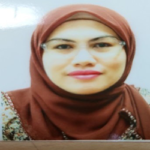
Hospital Sultan Idris Shah, Serdang, Malaysia
Current Position
Head Nurse
Biosketch
Nurasmayanti Leman is a registered Malaysian Nursing Board member and currently works as head nurse in the Cardiothoracic Intensive Care Unit of Hospital Sultan Idris Shah. She had a Diploma in Nursing from Seremban Nursing College and a Postbasic Sub-specialization in Intensive Care and Paediatric. Nurasmayanti Leman is actively involved in teaching and training in the fields of nursing in ECMO patients in the Ministry of Health.
Ecmo Nursing Roles And Respondsibilities
ECMO is a highly specialized technique, which needs the input of intensive care specialists, cardiothoracic surgeons as well as ECMO-trained nurses and Perfussionist. The complexity of the patient requiring the treatment and the physiological impact of the large extracorporeal blood flow makes the management of the patient on ECMO a challenging prospect for the clinical care nurse.
ECMO is expensive, invasive, high risk of complications with indicated only to a specified critical care patients. However, for the suitable patient, ECMO is life saving and must be considered as a viable extension to conventional care treatment. In clinical settings where the ECMO patient is primarily managed by the ICU nurse (the single care giver model) the ICU nurse should be specifically trained in ECMO patient and circuit management. Nurses with this responsibility should be approved by the program director.
The ECMO specialist team is responsible for managing equipment and supplies, circuit preparation, troubleshooting, daily rounds, education, and service administration.

Hospital Sultan Idris Shah, Serdang, Malaysia
Current Position
Head Nurse
Biosketch
Nurasmayanti Leman is a registered Malaysian Nursing Board member and currently works as head nurse in the Cardiothoracic Intensive Care Unit of Hospital Sultan Idris Shah. She had a Diploma in Nursing from Seremban Nursing College and a Postbasic Sub-specialization in Intensive Care and Paediatric. Nurasmayanti Leman is actively involved in teaching and training in the fields of nursing in ECMO patients in the Ministry of Health.
Ecmo Nursing Roles And Respondsibilities
ECMO is a highly specialized technique, which needs the input of intensive care specialists, cardiothoracic surgeons as well as ECMO-trained nurses and Perfussionist. The complexity of the patient requiring the treatment and the physiological impact of the large extracorporeal blood flow makes the management of the patient on ECMO a challenging prospect for the clinical care nurse.
ECMO is expensive, invasive, high risk of complications with indicated only to a specified critical care patients. However, for the suitable patient, ECMO is life saving and must be considered as a viable extension to conventional care treatment. In clinical settings where the ECMO patient is primarily managed by the ICU nurse (the single care giver model) the ICU nurse should be specifically trained in ECMO patient and circuit management. Nurses with this responsibility should be approved by the program director.
The ECMO specialist team is responsible for managing equipment and supplies, circuit preparation, troubleshooting, daily rounds, education, and service administration.

Hospital Sultan Idris Shah, Serdang, Malaysia
Current Position
Rehabilitation Physician
Biodata
Dr Saari Mohamad Yatim graduated from University Sains Malaysia and obtained his Master Degree in Rehabilitation Medicine from University Malaya. He is currently the Deputy Head of Rehabilitation Medicine services in the Ministry of Health Malaysia and Head of Rehabilitation Department in Hospital Serdang. He is also an executive board member of the Asia-Oceanian Society of Physical and Rehabilitatin Medicine and AsiaPRevent.
His special interest is in the field of Cardiopulmonary Rehabilittion and received his training from Tung Wah Hospital, Hong Kong. He also had a special training in Pulmonary Rehabilitation in Chanbouk National University, South Korea.
ECMO is an outbreaking, life-saving technology of the last decades which is being used as a gold standard treatment in patients with severe cardiac, respiratory or combined cardiorespiratory failure. Critically ill patients on ECMO very often present intensive care unit-acquired weakness (ICU-AW); thus, leading to decreased exercise capacity and increased mortality rates. Early mobilization and physical therapy have been proven to be safe and feasible in critically ill patients on ECMO, either as a bridge to lung/heart transplantation or as a bridge to recovery. Rehabilitation has beneficial effects from the early stages in the ICU, resulting in the prevention of ICU-AW, and a decrease in episodes of delirium, the duration of mechanical ventilation, ICU and hospital length of stay, and mortality rates. It also improves functional ability, exercise capacity, and quality of life. Rehabilitation requires a very careful, multi-disciplinary approach from a highly specialized team from different specialties. Initial risk assessment and screening, with appropriate rehabilitation program and exercise monitoring in patients receiving ECMO therapy are crucial factors for achieving treatment goals.

Hospital Sultan Idris Shah, Serdang, Malaysia
Current Position
Rehabilitation Physician
Biodata
Dr Saari Mohamad Yatim graduated from University Sains Malaysia and obtained his Master Degree in Rehabilitation Medicine from University Malaya. He is currently the Deputy Head of Rehabilitation Medicine services in the Ministry of Health Malaysia and Head of Rehabilitation Department in Hospital Serdang. He is also an executive board member of the Asia-Oceanian Society of Physical and Rehabilitatin Medicine and AsiaPRevent.
His special interest is in the field of Cardiopulmonary Rehabilittion and received his training from Tung Wah Hospital, Hong Kong. He also had a special training in Pulmonary Rehabilitation in Chanbouk National University, South Korea.
ECMO is an outbreaking, life-saving technology of the last decades which is being used as a gold standard treatment in patients with severe cardiac, respiratory or combined cardiorespiratory failure. Critically ill patients on ECMO very often present intensive care unit-acquired weakness (ICU-AW); thus, leading to decreased exercise capacity and increased mortality rates. Early mobilization and physical therapy have been proven to be safe and feasible in critically ill patients on ECMO, either as a bridge to lung/heart transplantation or as a bridge to recovery. Rehabilitation has beneficial effects from the early stages in the ICU, resulting in the prevention of ICU-AW, and a decrease in episodes of delirium, the duration of mechanical ventilation, ICU and hospital length of stay, and mortality rates. It also improves functional ability, exercise capacity, and quality of life. Rehabilitation requires a very careful, multi-disciplinary approach from a highly specialized team from different specialties. Initial risk assessment and screening, with appropriate rehabilitation program and exercise monitoring in patients receiving ECMO therapy are crucial factors for achieving treatment goals.

Institut Jantung Negara, Kuala Lumpur, Malaysia
Current Position
Deputy of HOD, Anaesthesia & Intensive Care Department
ICU Clinical Director / Consultant Intensivist / Anaesthesiologist
Biosketch
Dato’ Dr. Suneta Sulaiman had a medical degree, an MBBS from the University of Adelaide, Australia, and then she completed post-graduate Master of Anaesthesia training at Universiti Sains Malaysia in 2009.
She joined an intensive care fellowship and had an attachment at Flinders Medical Centre, Adelaide, South Australia, in 2011. She had ECMO training at Glenfield Hospital in Leicester, United Kingdom.
Special interest:
Adult Cardiothoracic Intensive Care
Heart Assist Devices
ECMO
COMING SOON

Institut Jantung Negara, Kuala Lumpur, Malaysia
Current Position
Deputy of HOD, Anaesthesia & Intensive Care Department
ICU Clinical Director / Consultant Intensivist / Anaesthesiologist
Biosketch
Dato’ Dr. Suneta Sulaiman had a medical degree, an MBBS from the University of Adelaide, Australia, and then she completed post-graduate Master of Anaesthesia training at Universiti Sains Malaysia in 2009.
She joined an intensive care fellowship and had an attachment at Flinders Medical Centre, Adelaide, South Australia, in 2011. She had ECMO training at Glenfield Hospital in Leicester, United Kingdom.
Special interest:
Adult Cardiothoracic Intensive Care
Heart Assist Devices
ECMO
COMING SOON
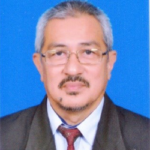
Hospital Raja Perempuan Zainab II, Kota Bharu, Malaysia
Current Position
Head of department and Consultant Anesthesiologist & Intensivist at Hospital Raja Perempuan Zainab II, K.Bharu.
Honorary lecture with Universiti Sains Malaysia.
Biosketch
Dato’ Dr Wan Nasrudin Wan Ismail had a medical degree from USM in 1991, and then he completed post-graduate Master of Anaesthesia training at UKM in 2000.
He joined intensive care fellowship training in 2005 and has been in various places, including Hospital Kuala Lumpur and Tan Tock Seng Hospital in Singapore. He is a member of the European Society of Intensive Care, and he also successfully passed the European Diploma in Intensive Care in 2010.
Special interest:
Haemodynamic Monitoring, Ventilatory support (invasive and non-invasive), Imaging, echocardiography, and thrombolytic therapy
COMING SOON

Hospital Raja Perempuan Zainab II, Kota Bharu, Malaysia
Current Position
Head of department and Consultant Anesthesiologist & Intensivist at Hospital Raja Perempuan Zainab II, K.Bharu.
Honorary lecture with Universiti Sains Malaysia.
Biosketch
Dato’ Dr Wan Nasrudin Wan Ismail had a medical degree from USM in 1991, and then he completed post-graduate Master of Anaesthesia training at UKM in 2000.
He joined intensive care fellowship training in 2005 and has been in various places, including Hospital Kuala Lumpur and Tan Tock Seng Hospital in Singapore. He is a member of the European Society of Intensive Care, and he also successfully passed the European Diploma in Intensive Care in 2010.
Special interest:
Haemodynamic Monitoring, Ventilatory support (invasive and non-invasive), Imaging, echocardiography, and thrombolytic therapy
COMING SOON
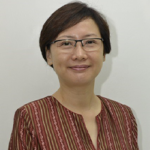
Hospital Lam Wah Ee, Penang, Malaysia
Current Position and Professional Portfolios
Consultant cardiothoracic anaesthesiologist
President, Malaysian Society of Anaesthesiologists, Malaysia.
Council Member, College of Anaesthesiologists, Academy of Medicine, Malaysia.
Training Committee Member and Assessor, Anaesthesiology and Critical Care Parallel Pathway Training, College of Anaesthesiologists, Academy of Medicine, Malaysia.
Committee Member, Anaesthesiology and Critical Care National Specialist Register Sub-committee, Malaysian Medical Council.
MCAI Examiner, College of Anaesthesiologists, Ireland.
Biosketch
Dato’ Dr Yong is a consultant cardiothoracic anaesthesiologist currently attached to Hospital Lam Wah Ee, Penang. She was previously the Head of Department of the Department of Intensive Care, Hospital Pulau Pinang. She earned her medical degree (M.D.) in University of Sciences Malaysia in 1991 followed by post-graduate training in Anaesthesiology and Critical care in University Malaya (MMed. Anaes) and United Kingdom (FRCA) from 1994-98. She trained in the subspecialty of Cardiothoracic Anaesthesiology, Clinical Perfusion and Transesophageal Echocardiograph in Penang Hospital and the Royal Prince Alfred Hospital and Royal Alexandria Children’s Hospital in Sydney Australia from 2000-2003. She served the Ministry of Health Malaysia from 1991-2022, during which she held various portfolios, notably
- Chair of Anaesthesiology and Critical Care Parallel Pathway Training in Anaesthesiology of Ministry of Health. Malaysia.
- Program Coordinator and examiner, Advance Diploma in Cardiovascular Healthcare (Perfusion), Ministry of Health, Malaysia.
- Deputy Program Head, Cardiothoracic Anaesthesiology and Perfusion.
Physiology of ECMO
Learning objectives
- VV and VA ECMO circuit configurations
- Gas exchange in native lung and artificial lung/oxygenator during ECMO
- Determinants of oxygenation
- Determinants of CO2 clearance
- Shunt physiology
- Cardiovascular physiology and haemodynamics during ECMO
- Circuit pressures
- Circuit flow
- Determinants of mean arterial pressure
- Left ventricular function during ECMO
Differential Hypoxia
Learning objectives
- Pathophysiology of differential hypoxia during VA ECMO
- Monitoring of oxygenation during VA ECMO
Management

Hospital Lam Wah Ee, Penang, Malaysia
Current Position and Professional Portfolios
Consultant cardiothoracic anaesthesiologist
President, Malaysian Society of Anaesthesiologists, Malaysia.
Council Member, College of Anaesthesiologists, Academy of Medicine, Malaysia.
Training Committee Member and Assessor, Anaesthesiology and Critical Care Parallel Pathway Training, College of Anaesthesiologists, Academy of Medicine, Malaysia.
Committee Member, Anaesthesiology and Critical Care National Specialist Register Sub-committee, Malaysian Medical Council.
MCAI Examiner, College of Anaesthesiologists, Ireland.
Biosketch
Dato’ Dr Yong is a consultant cardiothoracic anaesthesiologist currently attached to Hospital Lam Wah Ee, Penang. She was previously the Head of Department of the Department of Intensive Care, Hospital Pulau Pinang. She earned her medical degree (M.D.) in University of Sciences Malaysia in 1991 followed by post-graduate training in Anaesthesiology and Critical care in University Malaya (MMed. Anaes) and United Kingdom (FRCA) from 1994-98. She trained in the subspecialty of Cardiothoracic Anaesthesiology, Clinical Perfusion and Transesophageal Echocardiograph in Penang Hospital and the Royal Prince Alfred Hospital and Royal Alexandria Children’s Hospital in Sydney Australia from 2000-2003. She served the Ministry of Health Malaysia from 1991-2022, during which she held various portfolios, notably
- Chair of Anaesthesiology and Critical Care Parallel Pathway Training in Anaesthesiology of Ministry of Health. Malaysia.
- Program Coordinator and examiner, Advance Diploma in Cardiovascular Healthcare (Perfusion), Ministry of Health, Malaysia.
- Deputy Program Head, Cardiothoracic Anaesthesiology and Perfusion.
Physiology of ECMO
Learning objectives
- VV and VA ECMO circuit configurations
- Gas exchange in native lung and artificial lung/oxygenator during ECMO
- Determinants of oxygenation
- Determinants of CO2 clearance
- Shunt physiology
- Cardiovascular physiology and haemodynamics during ECMO
- Circuit pressures
- Circuit flow
- Determinants of mean arterial pressure
- Left ventricular function during ECMO
Differential Hypoxia
Learning objectives
- Pathophysiology of differential hypoxia during VA ECMO
- Monitoring of oxygenation during VA ECMO
Management




